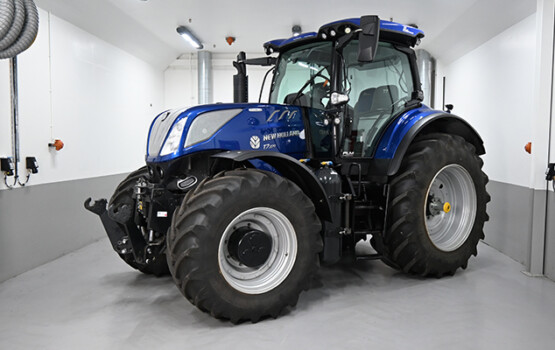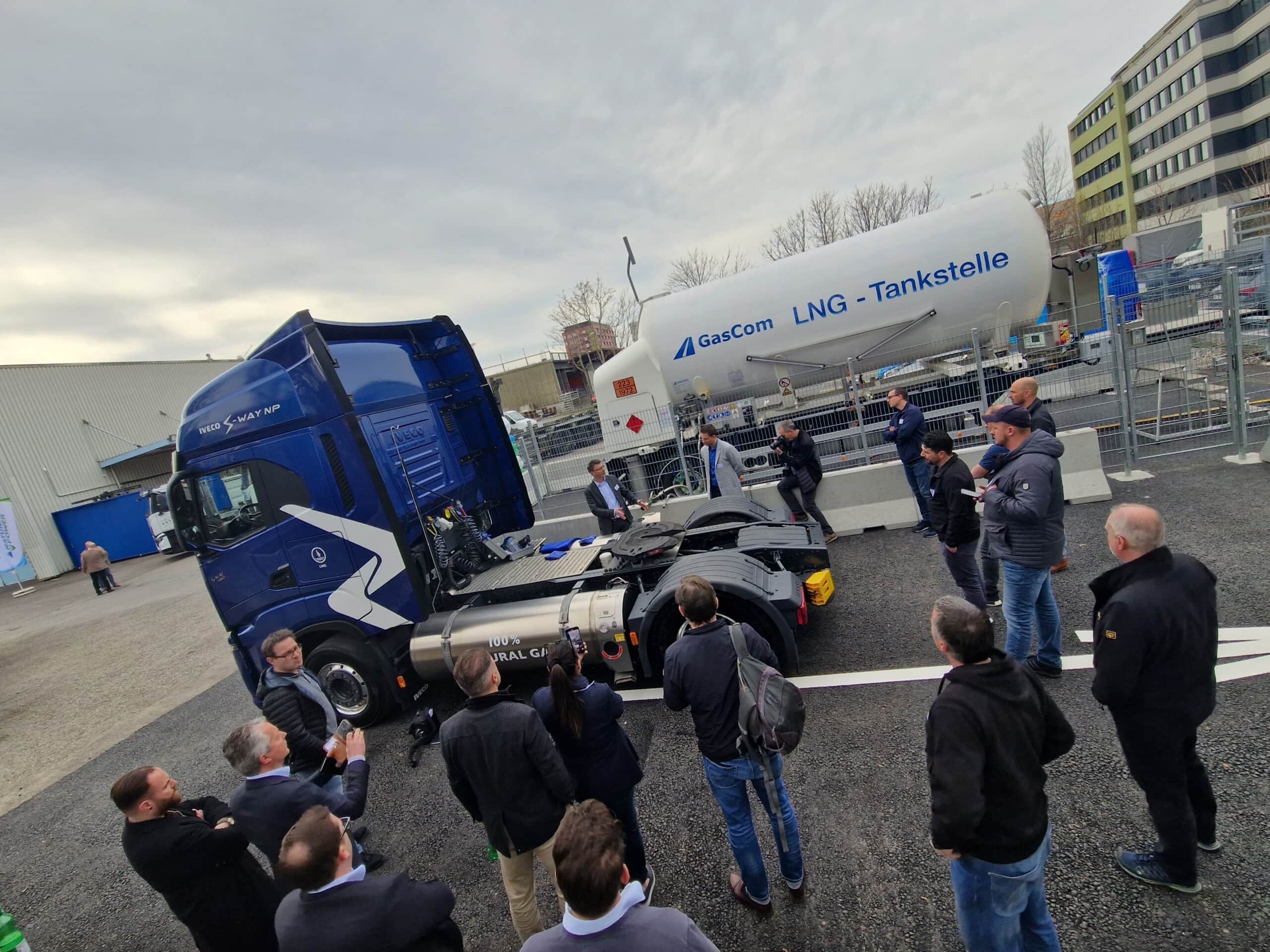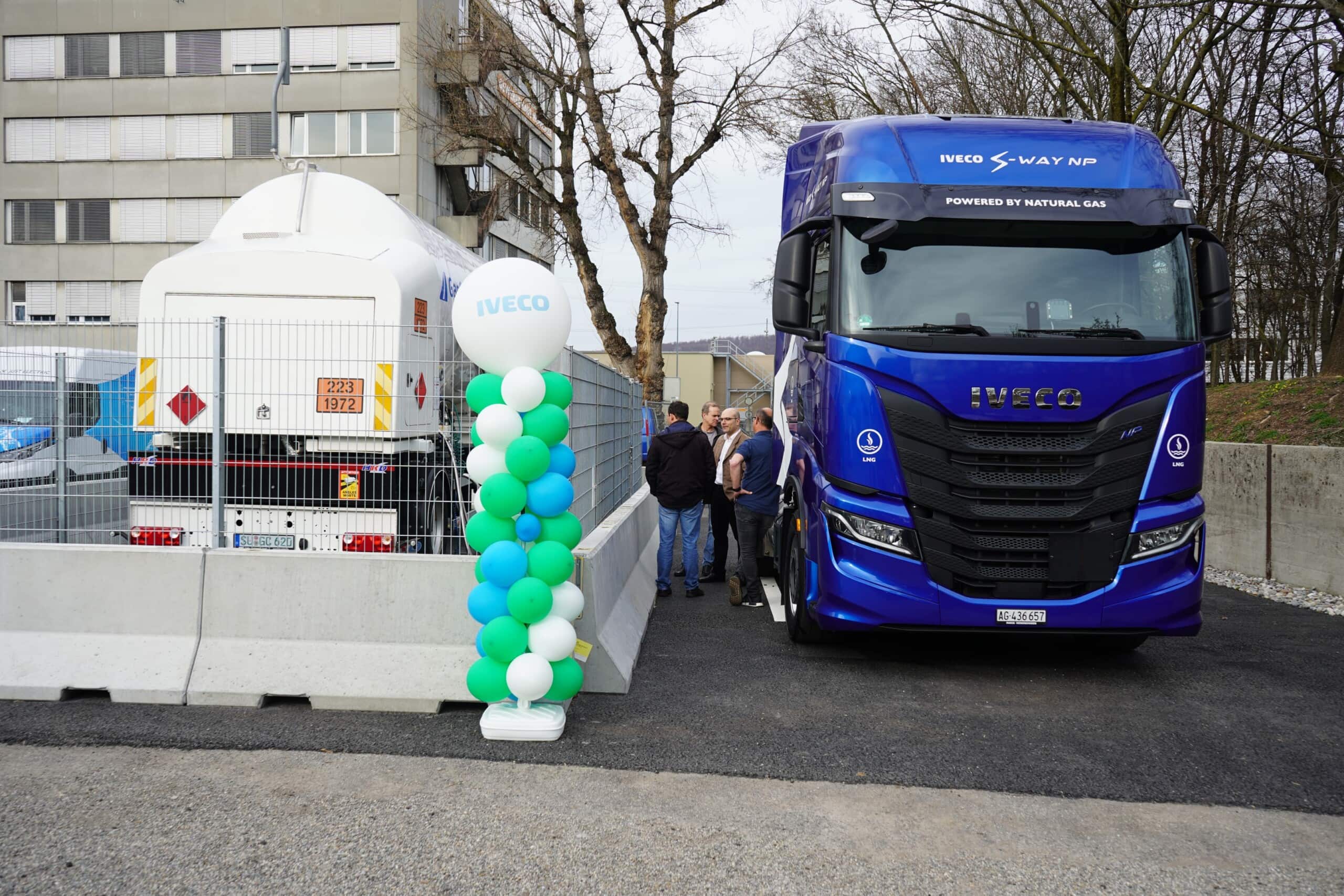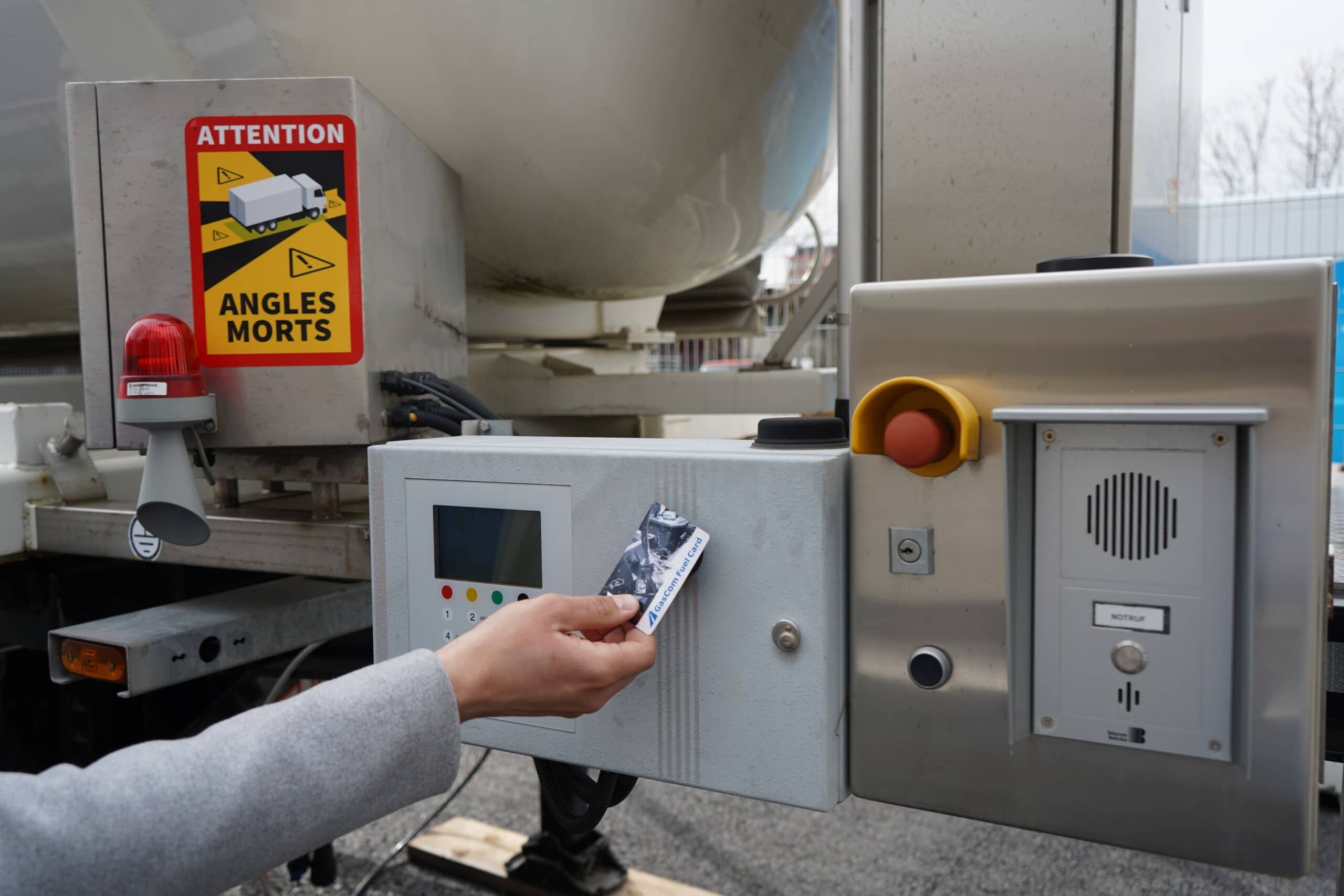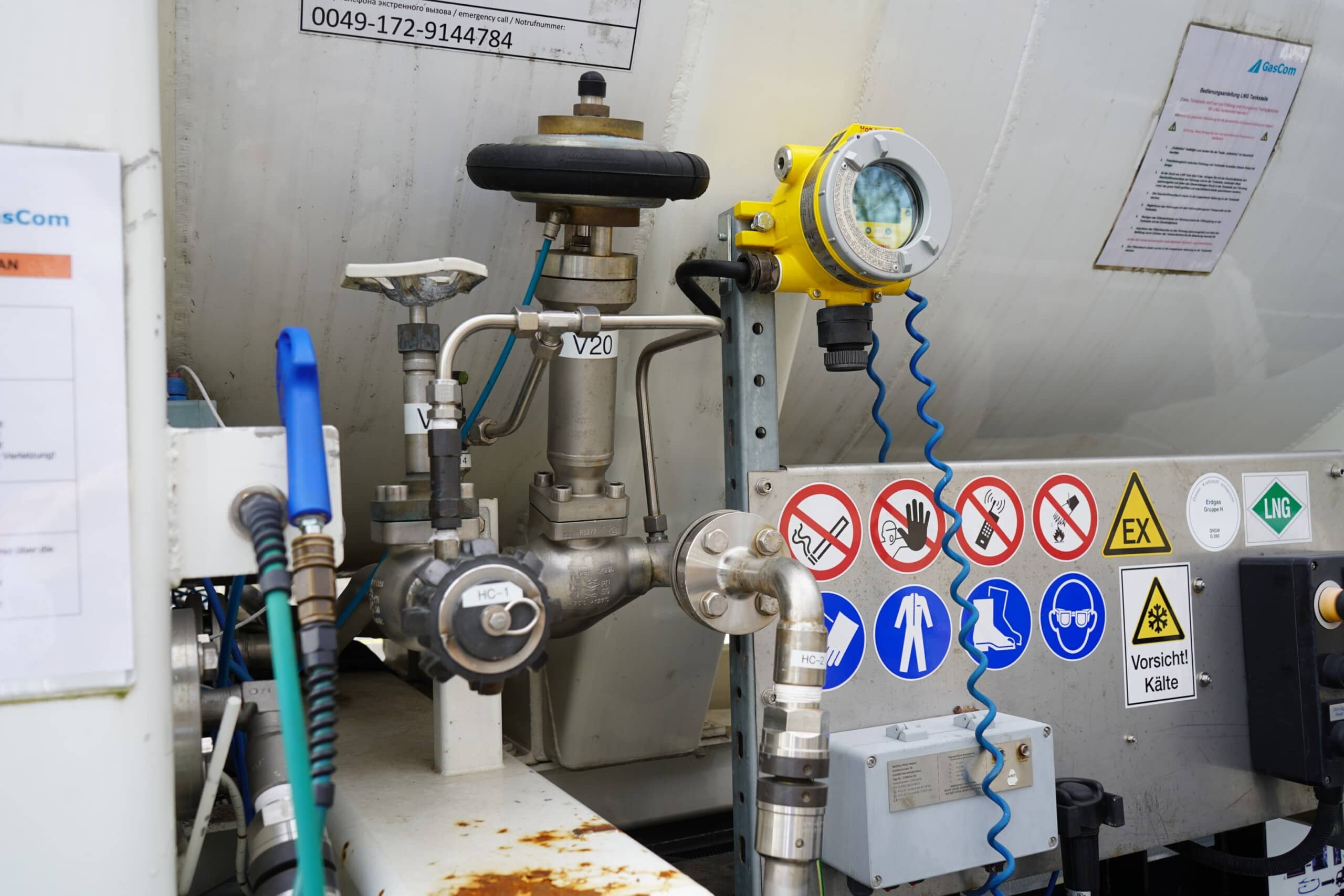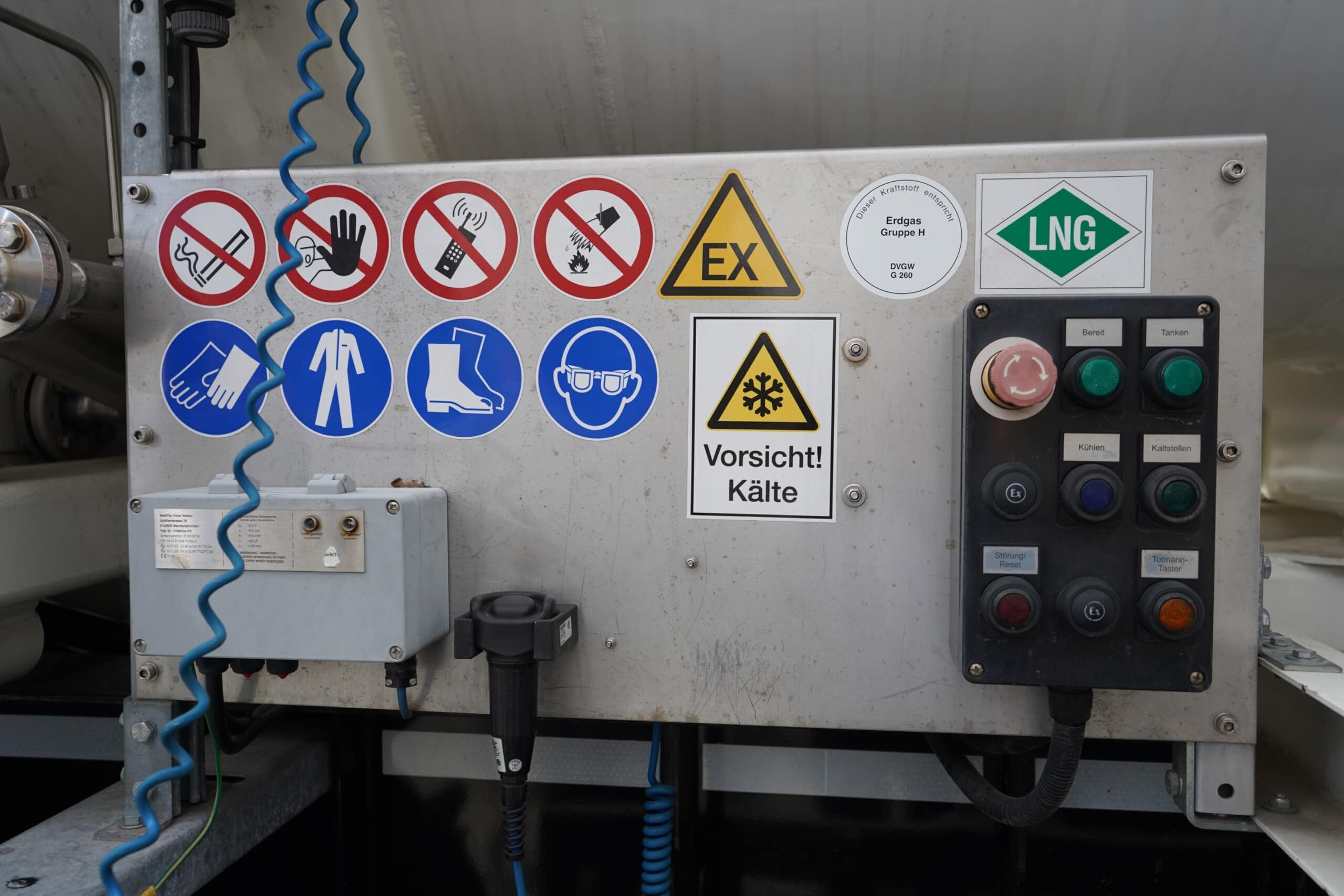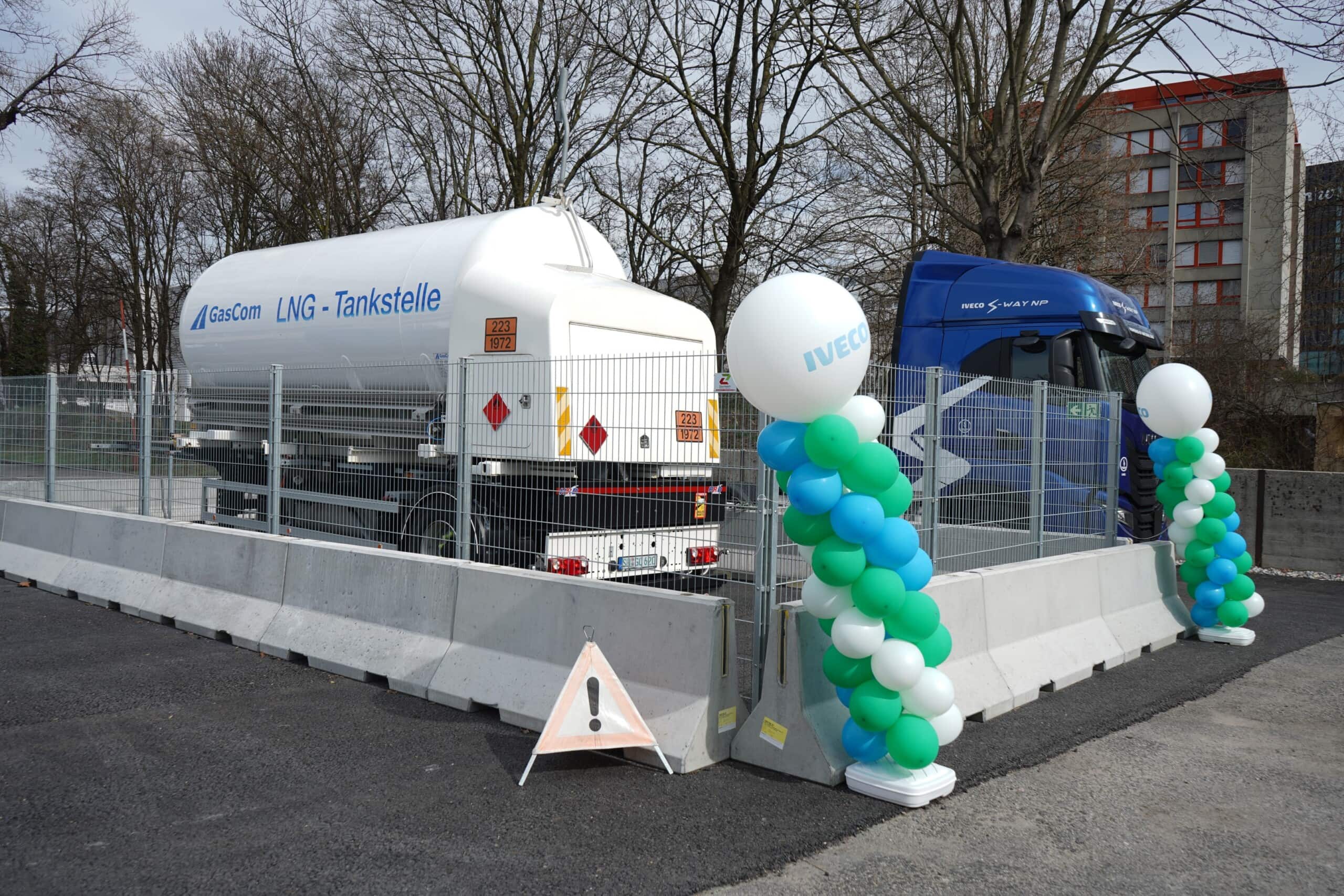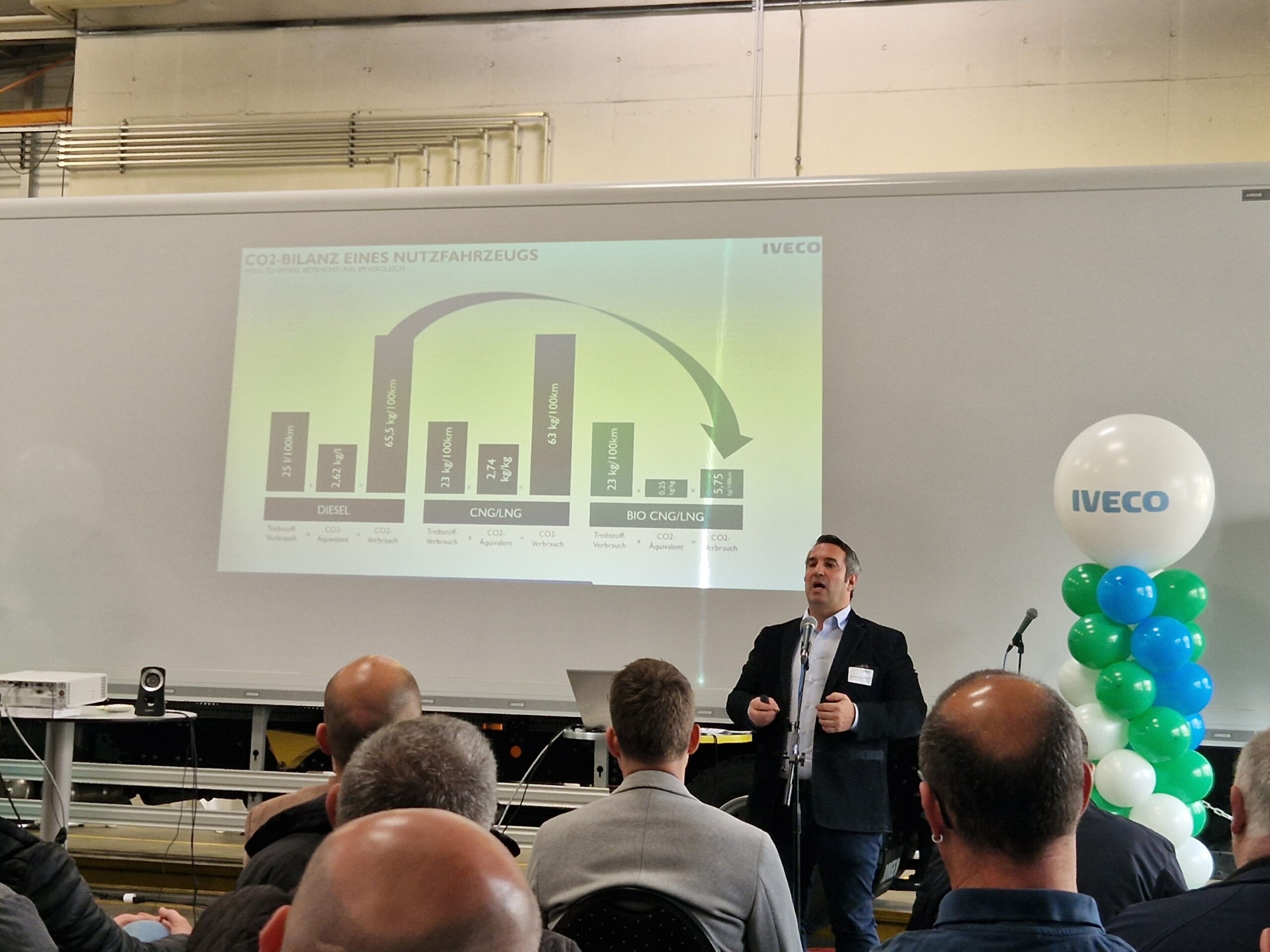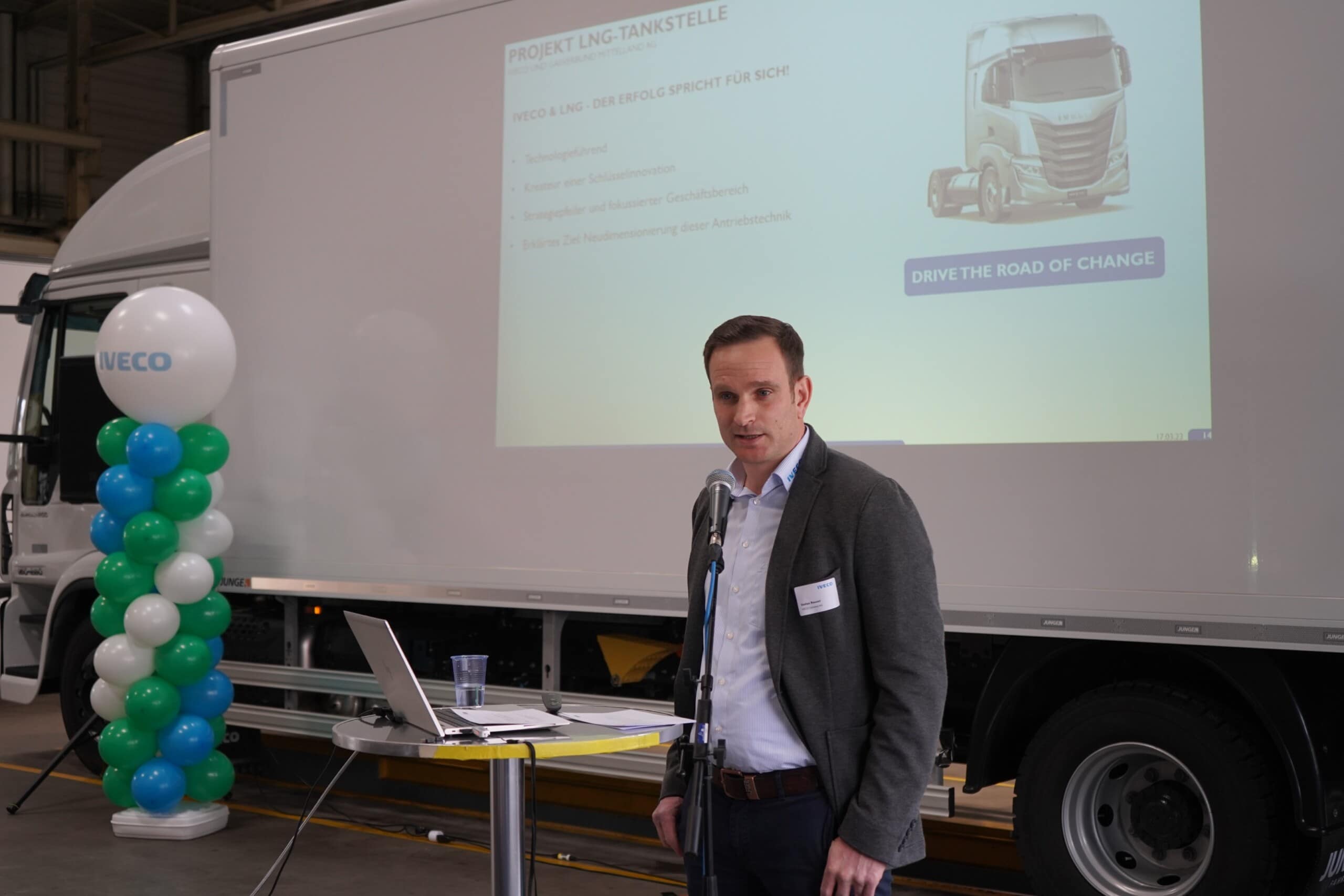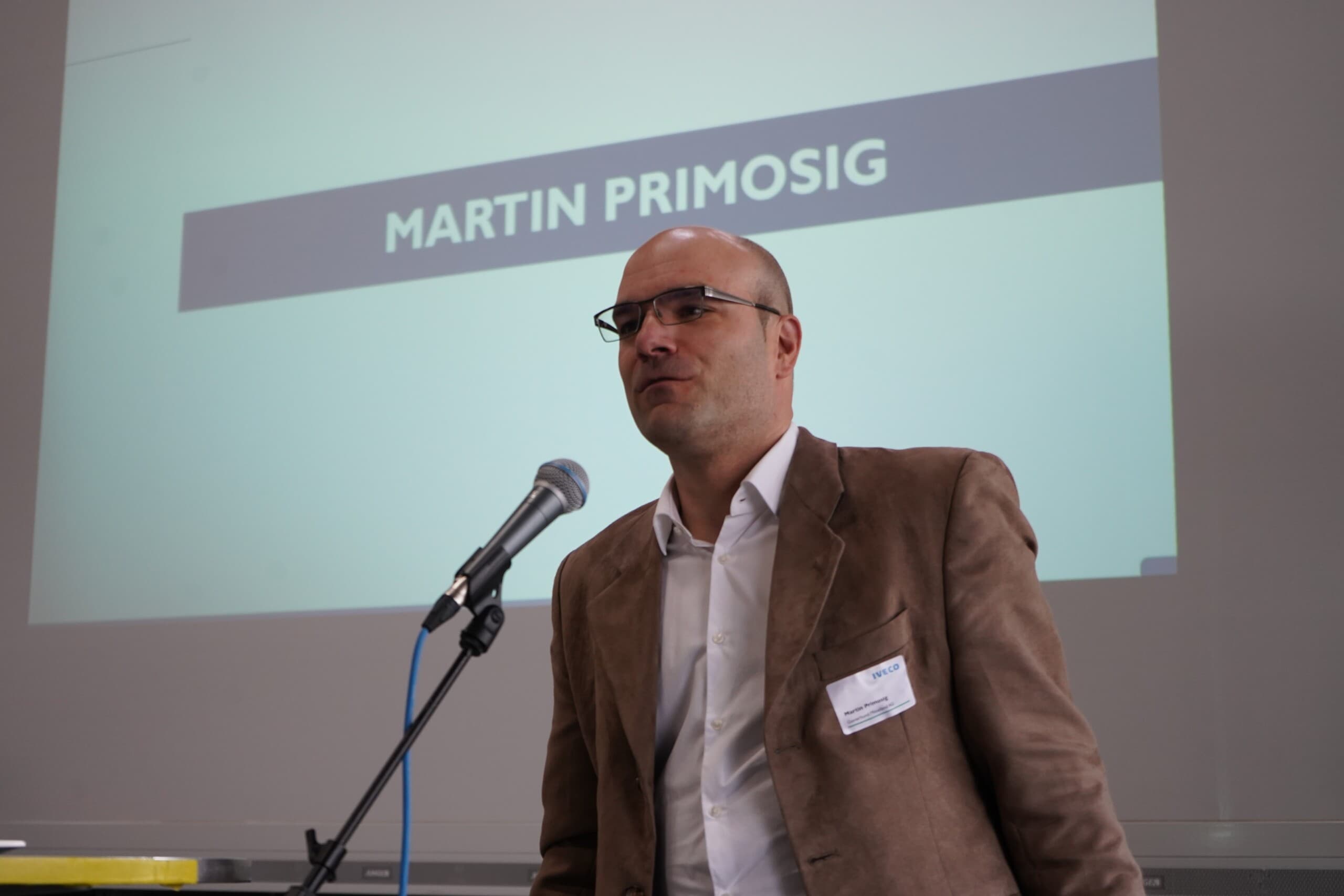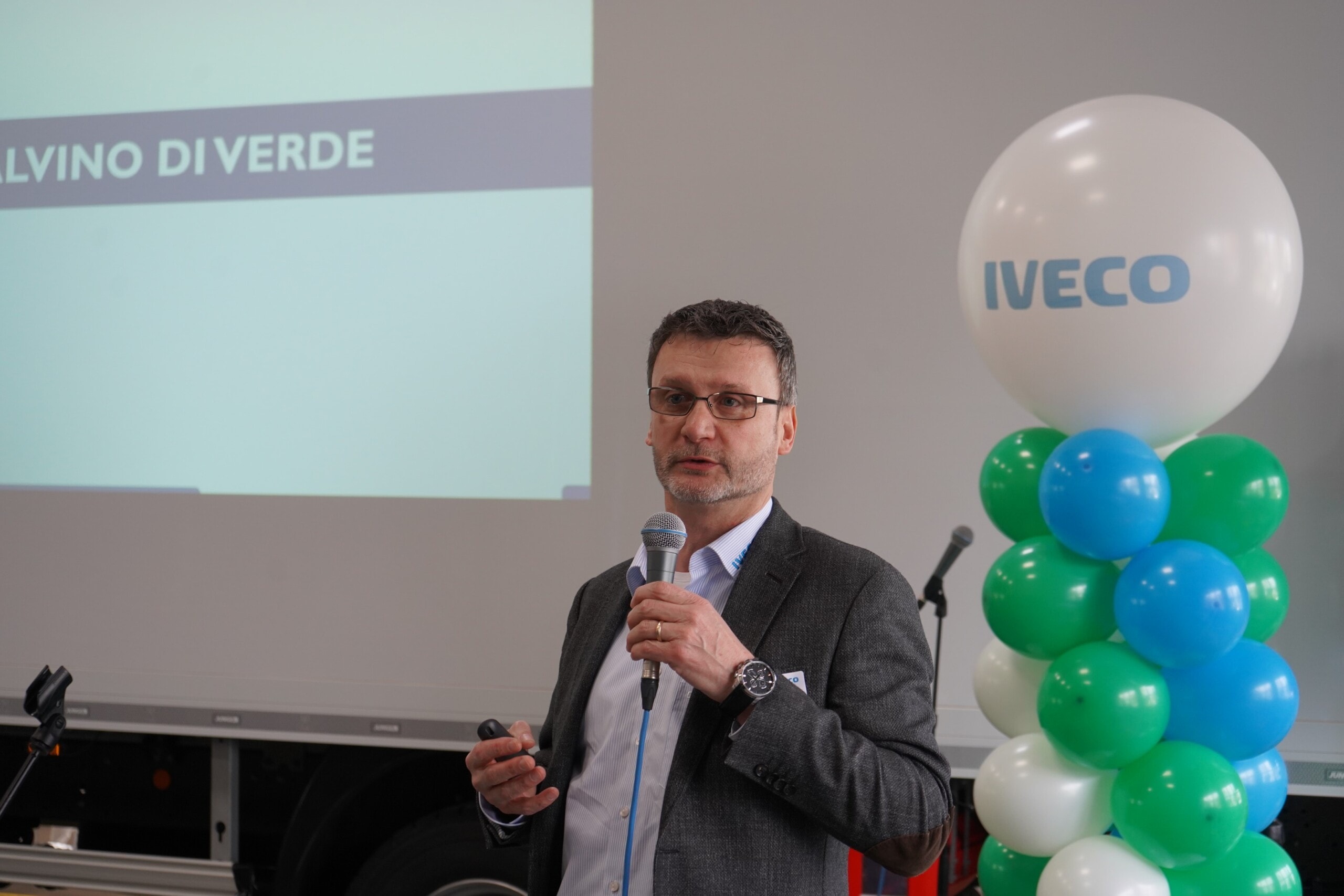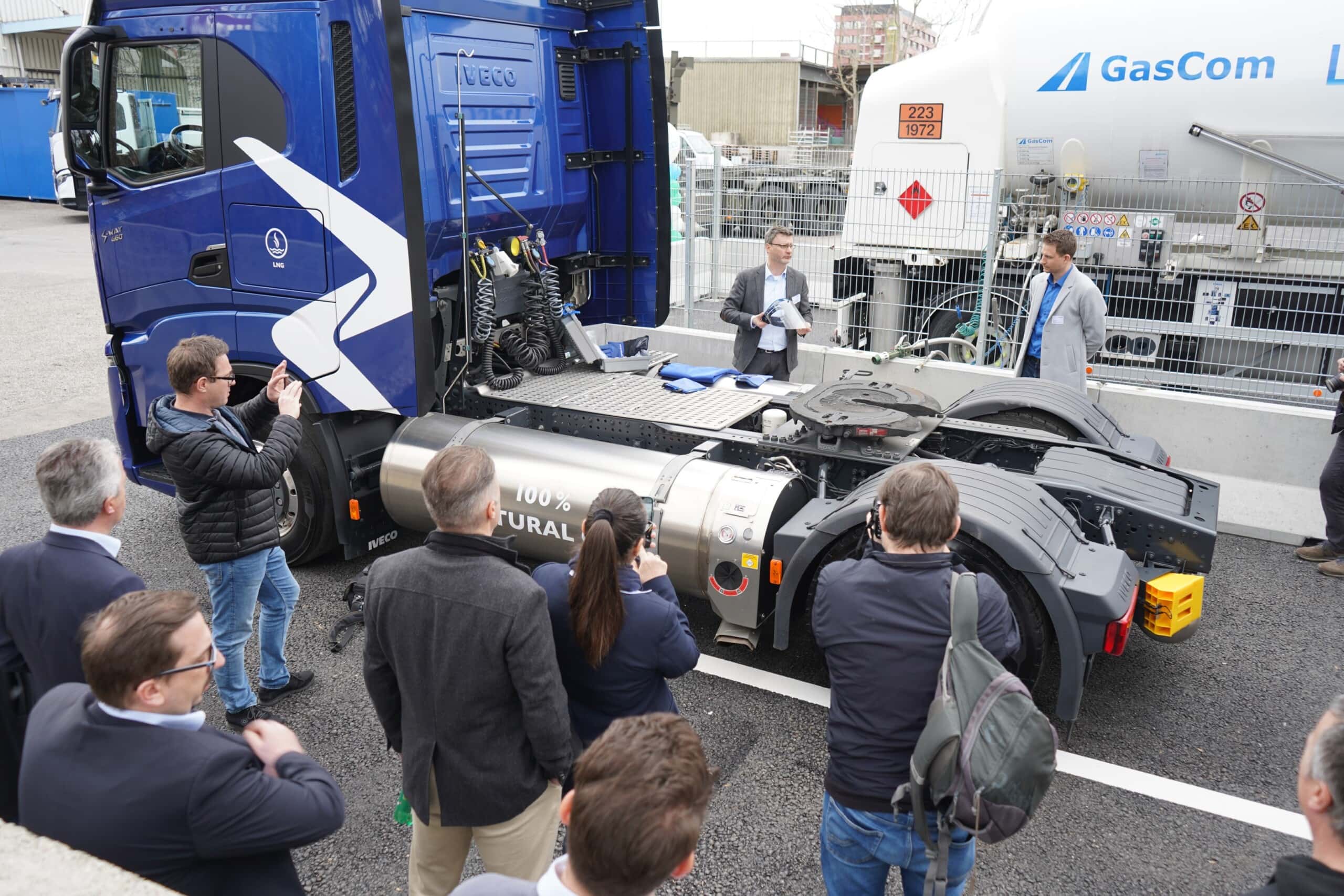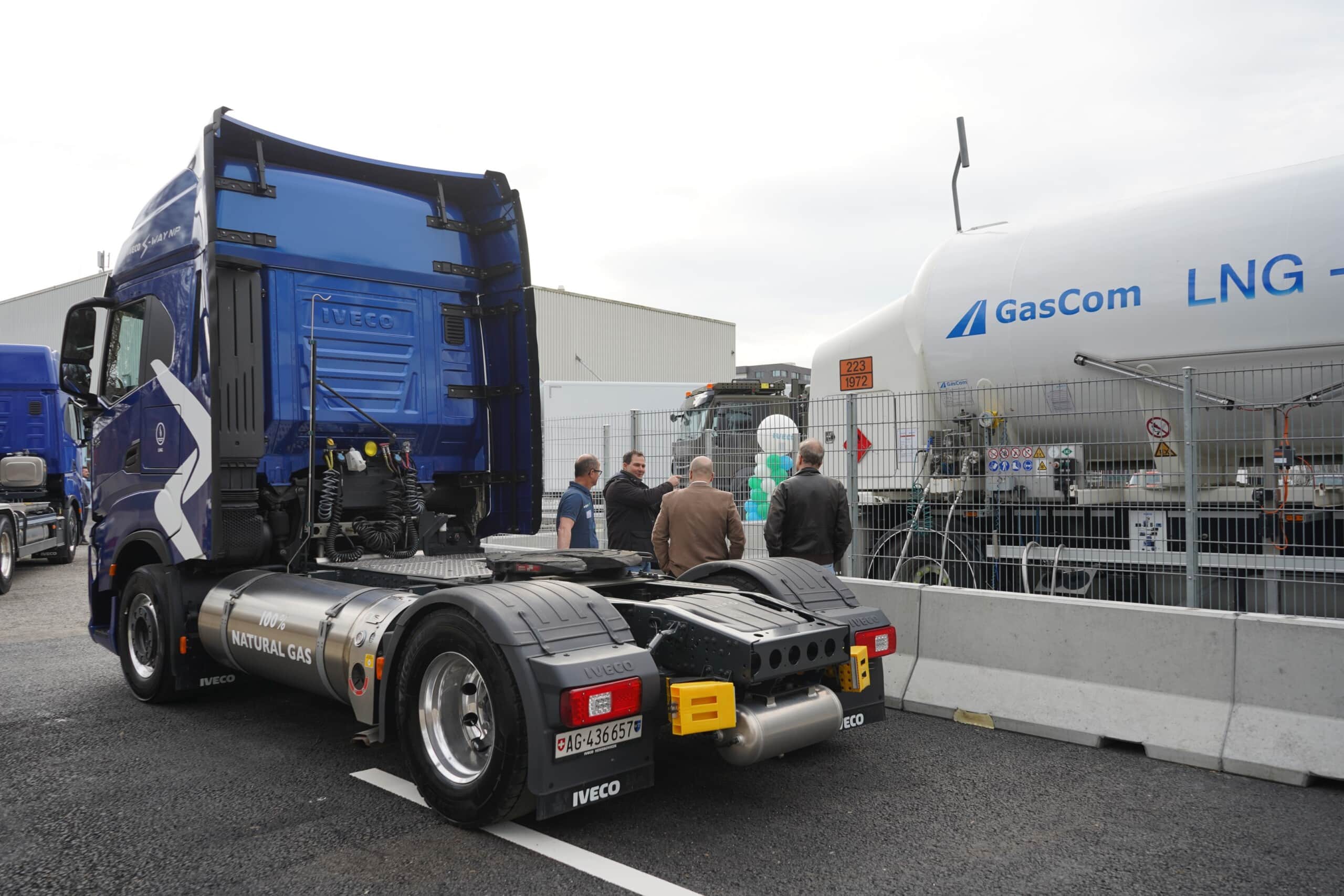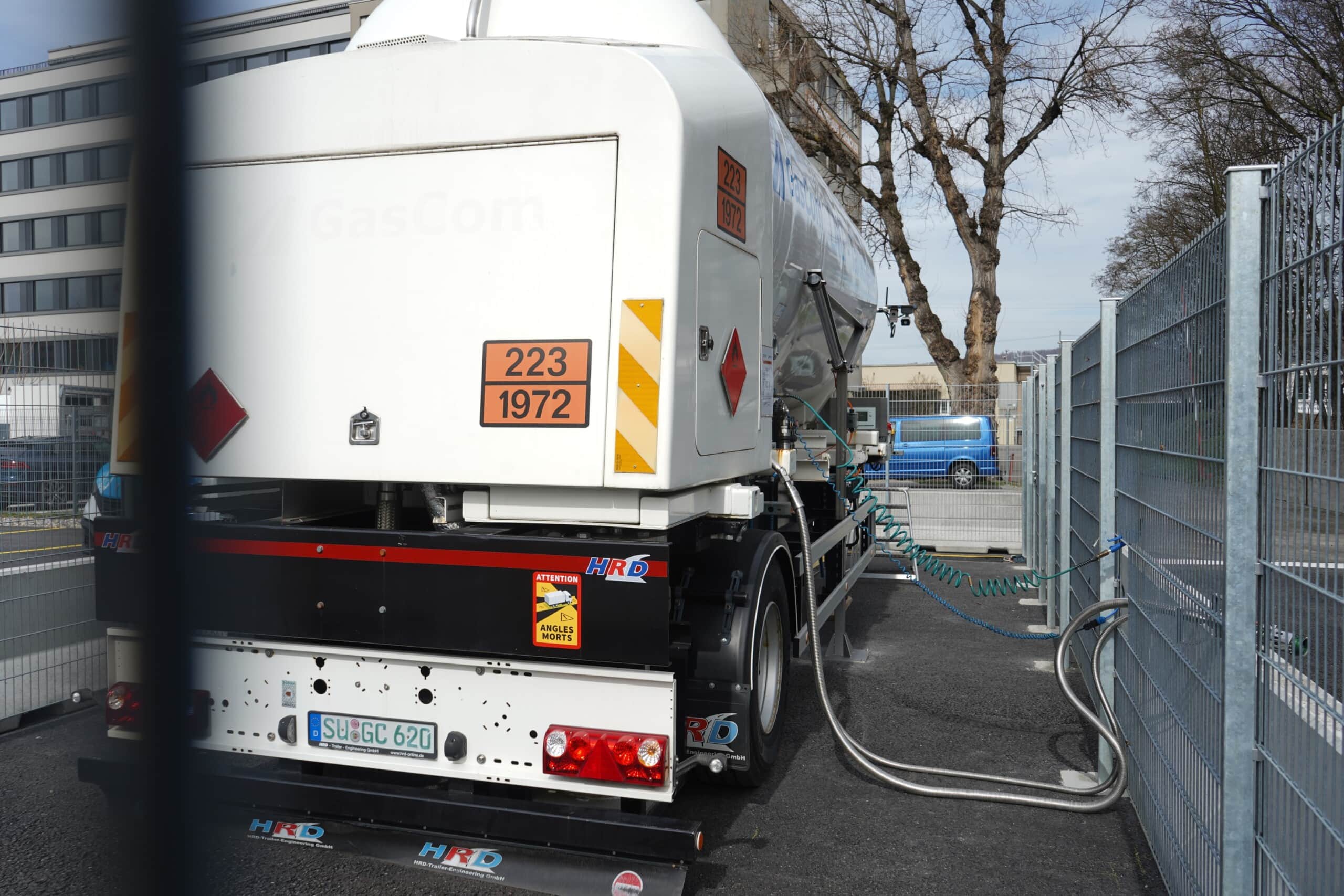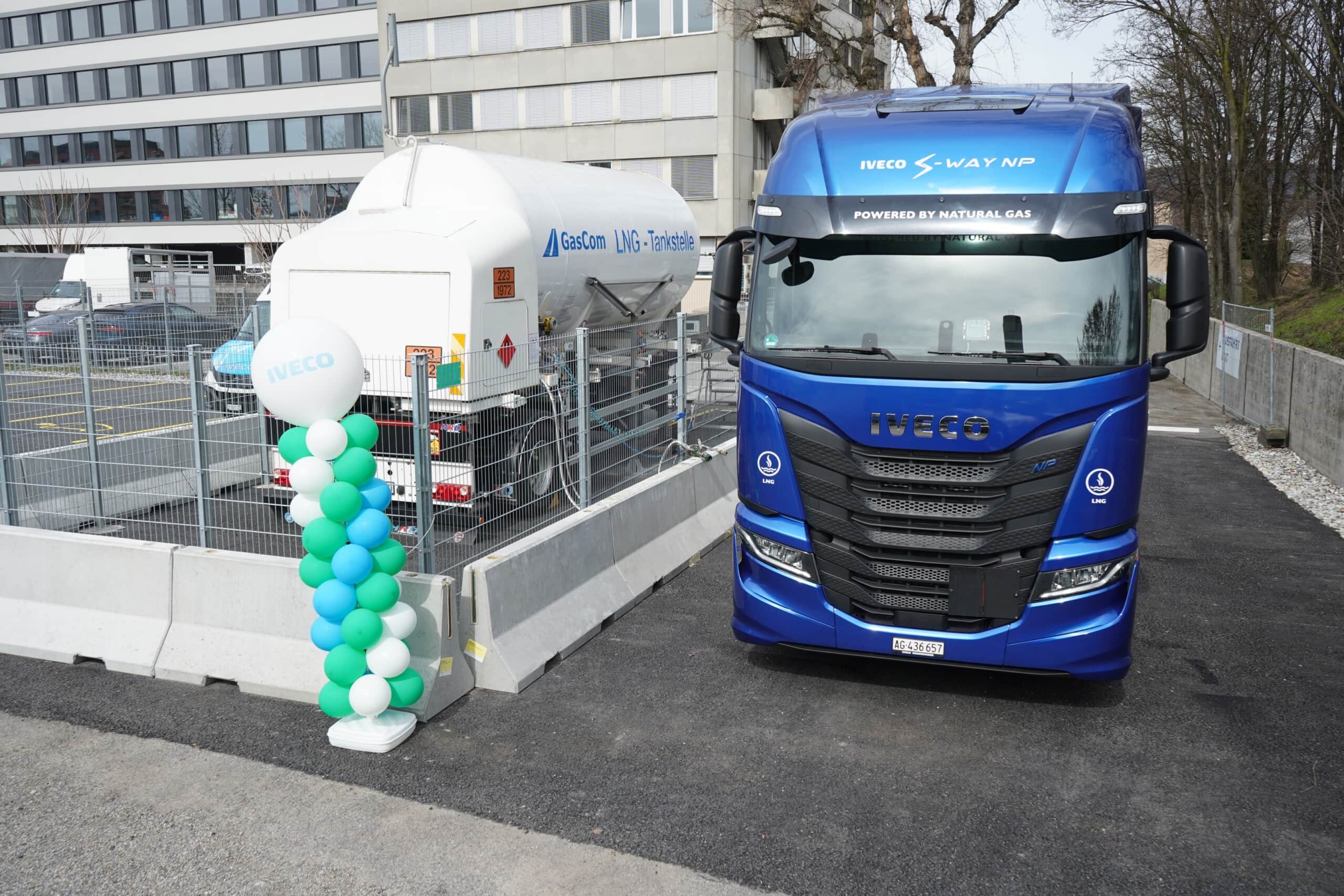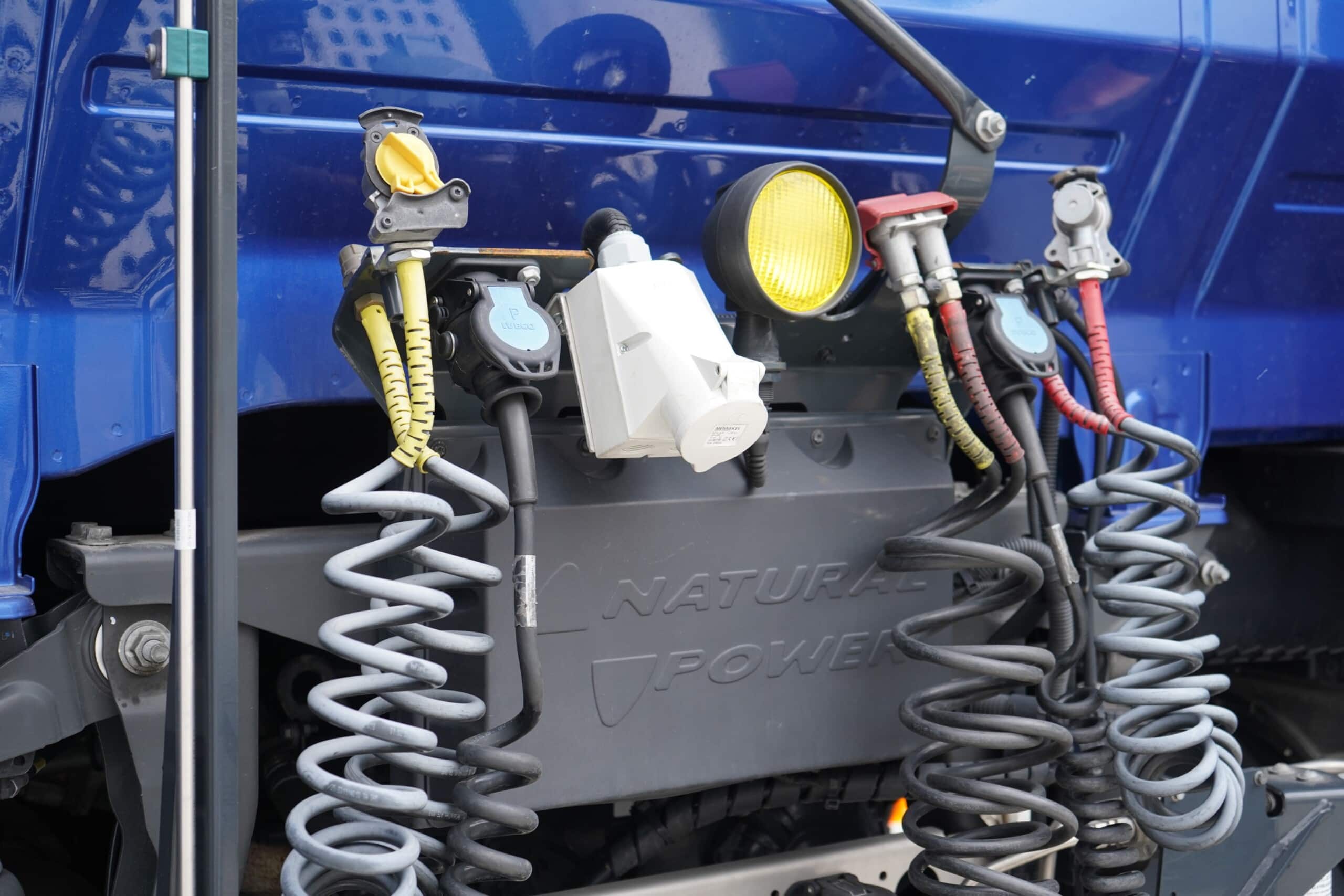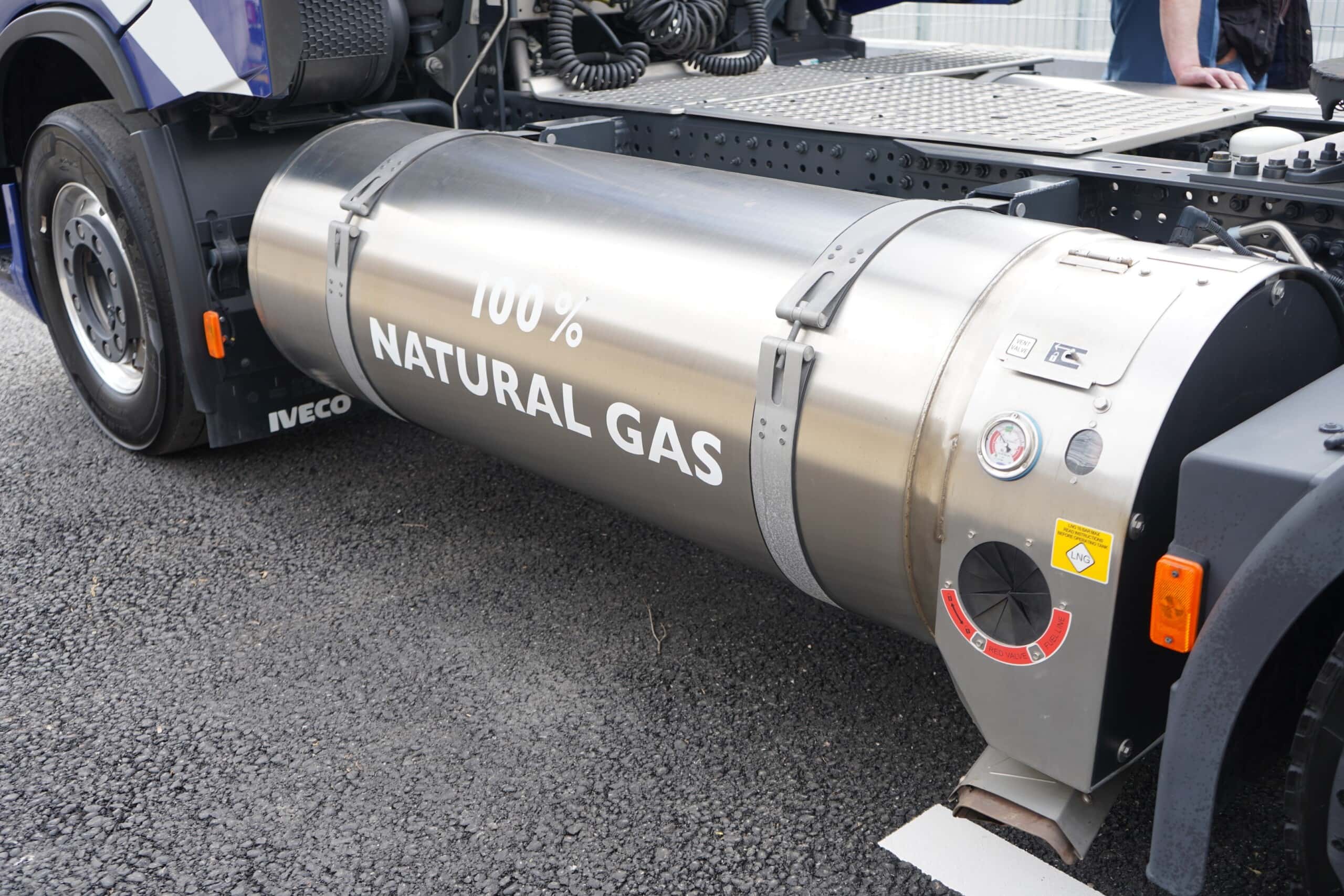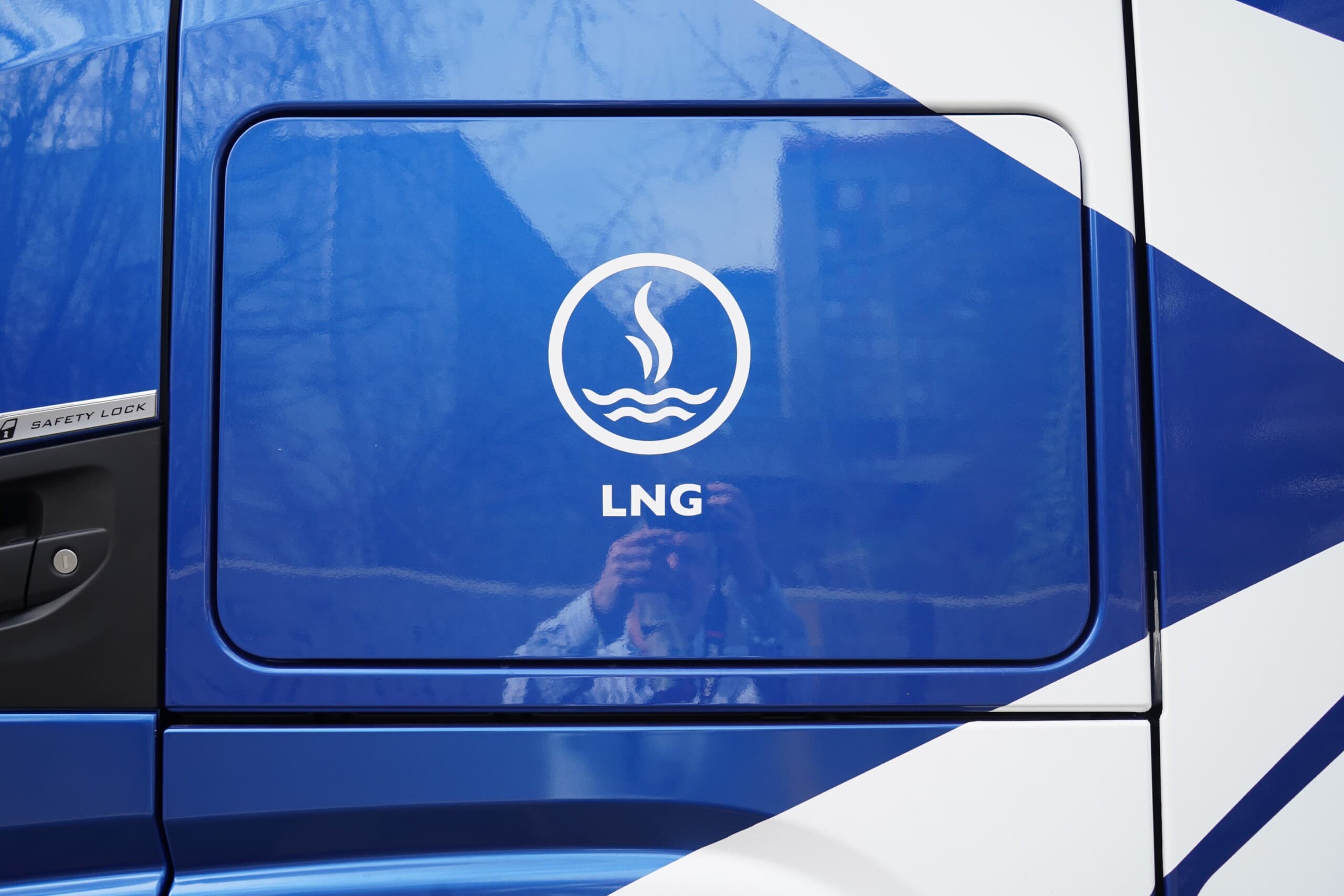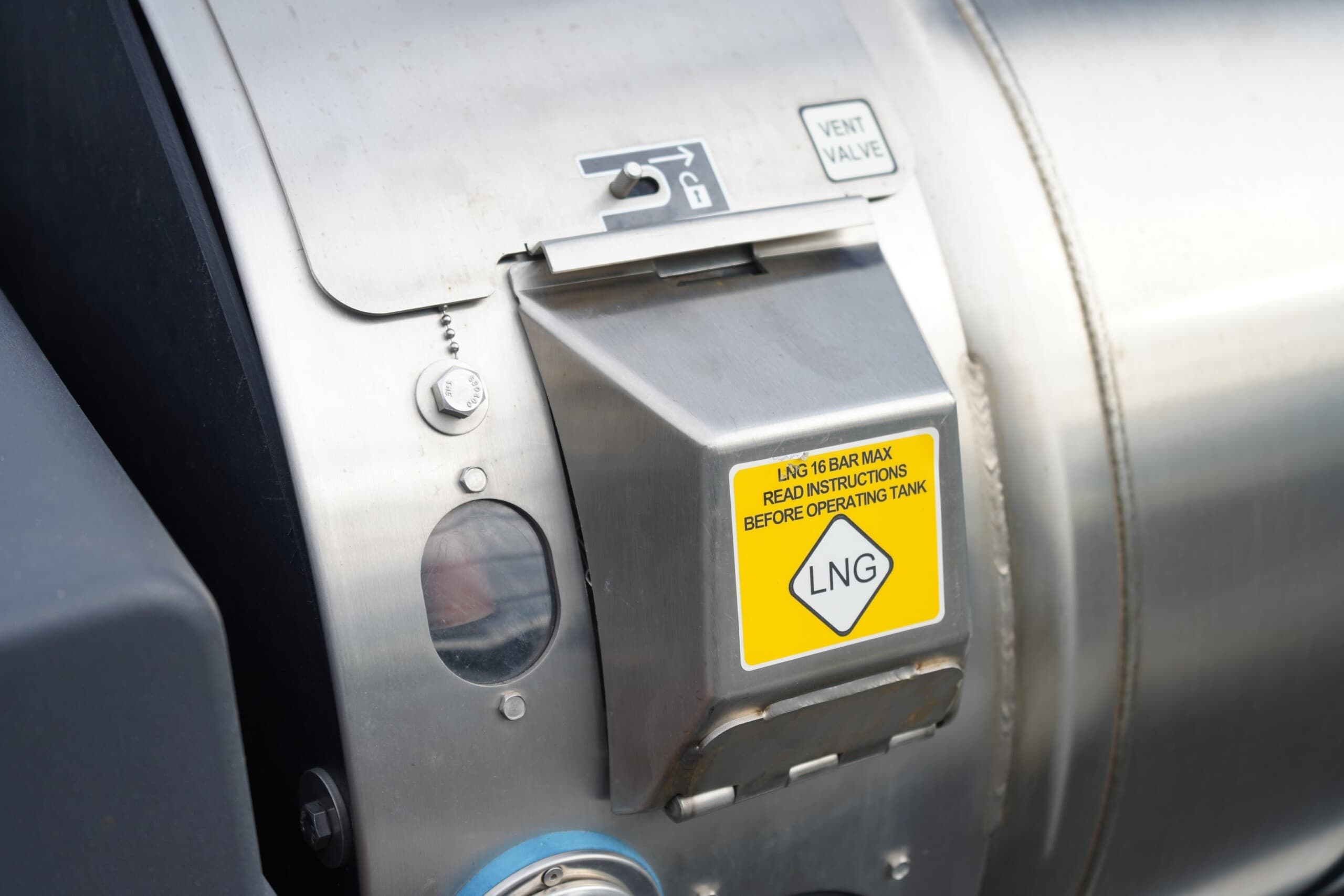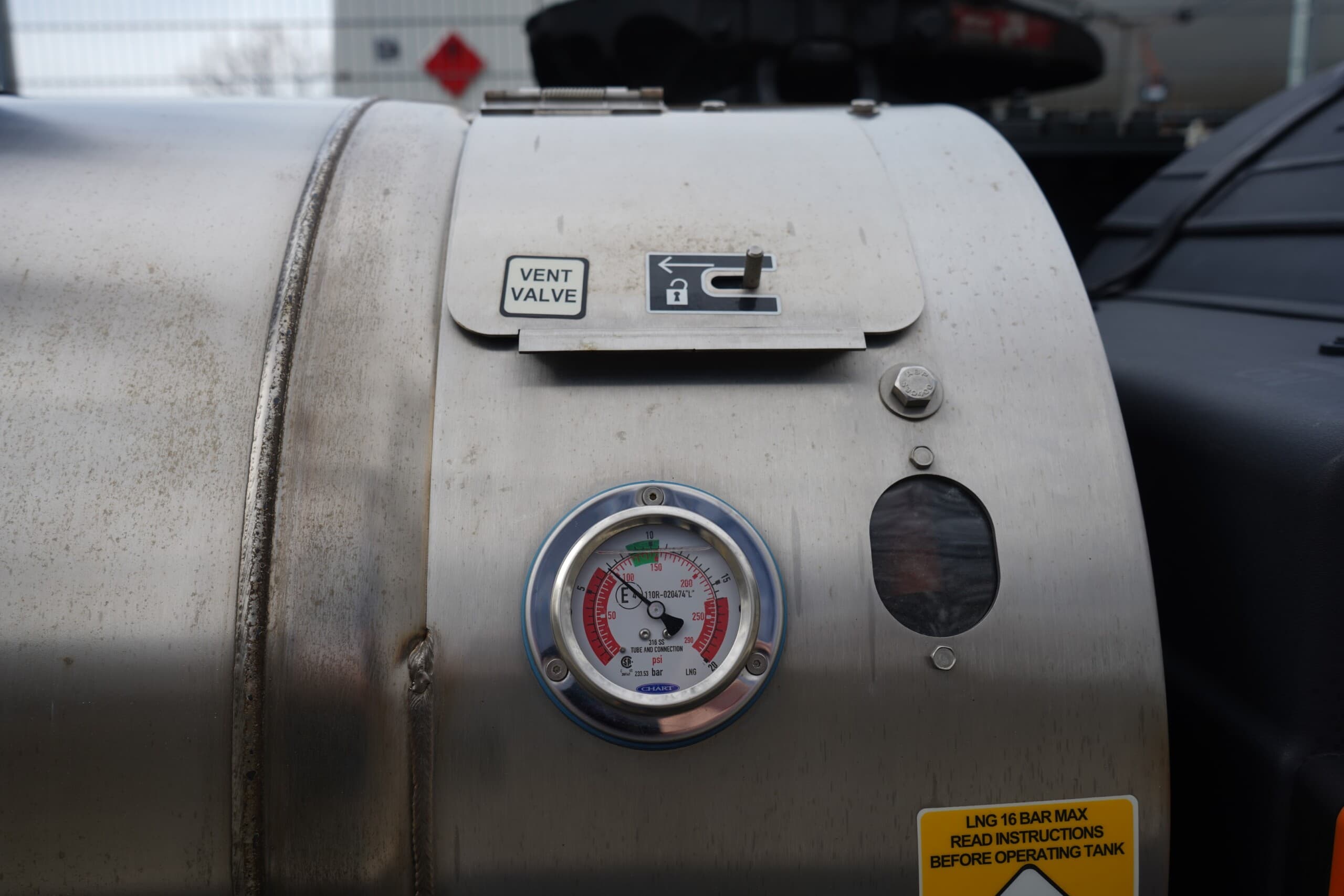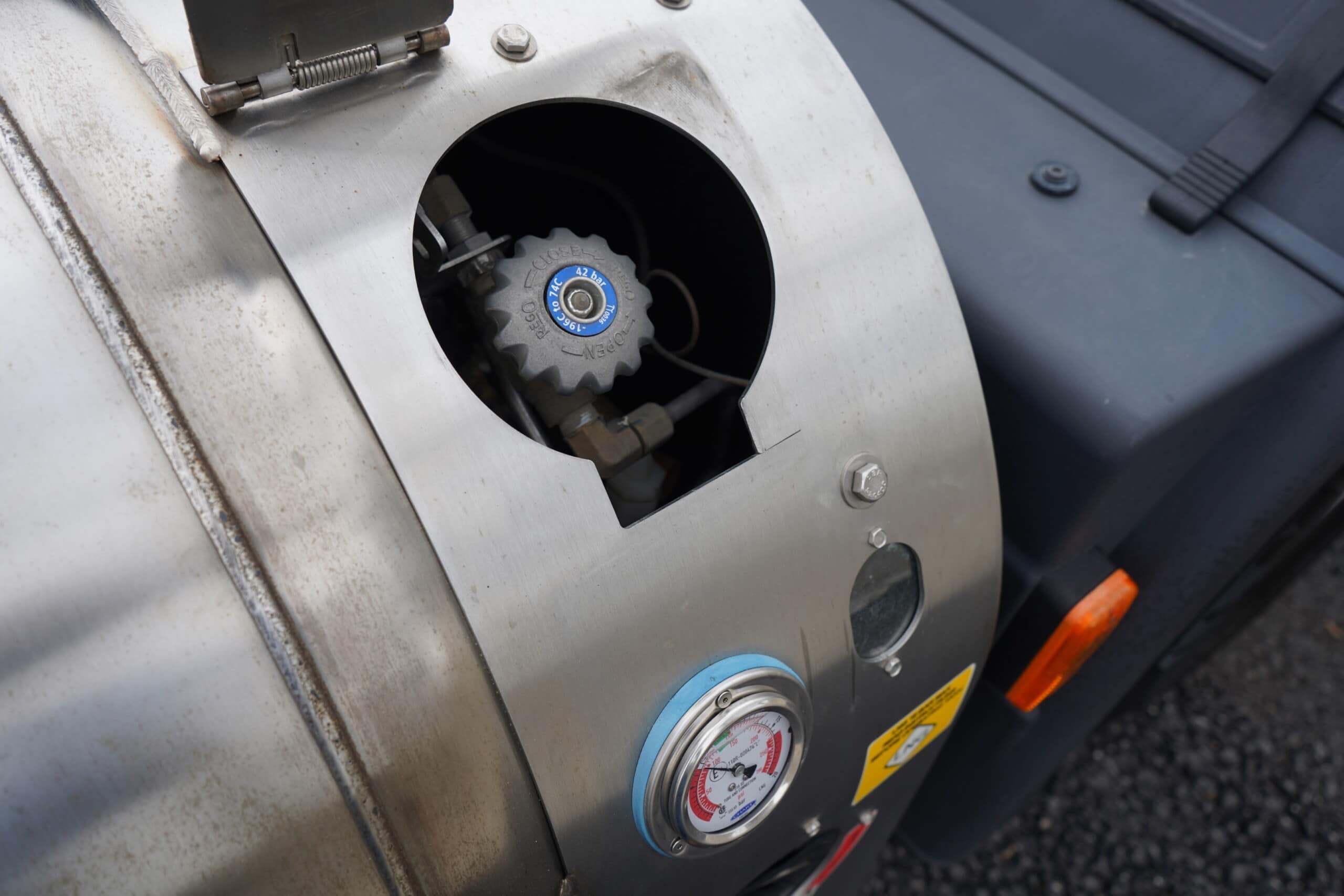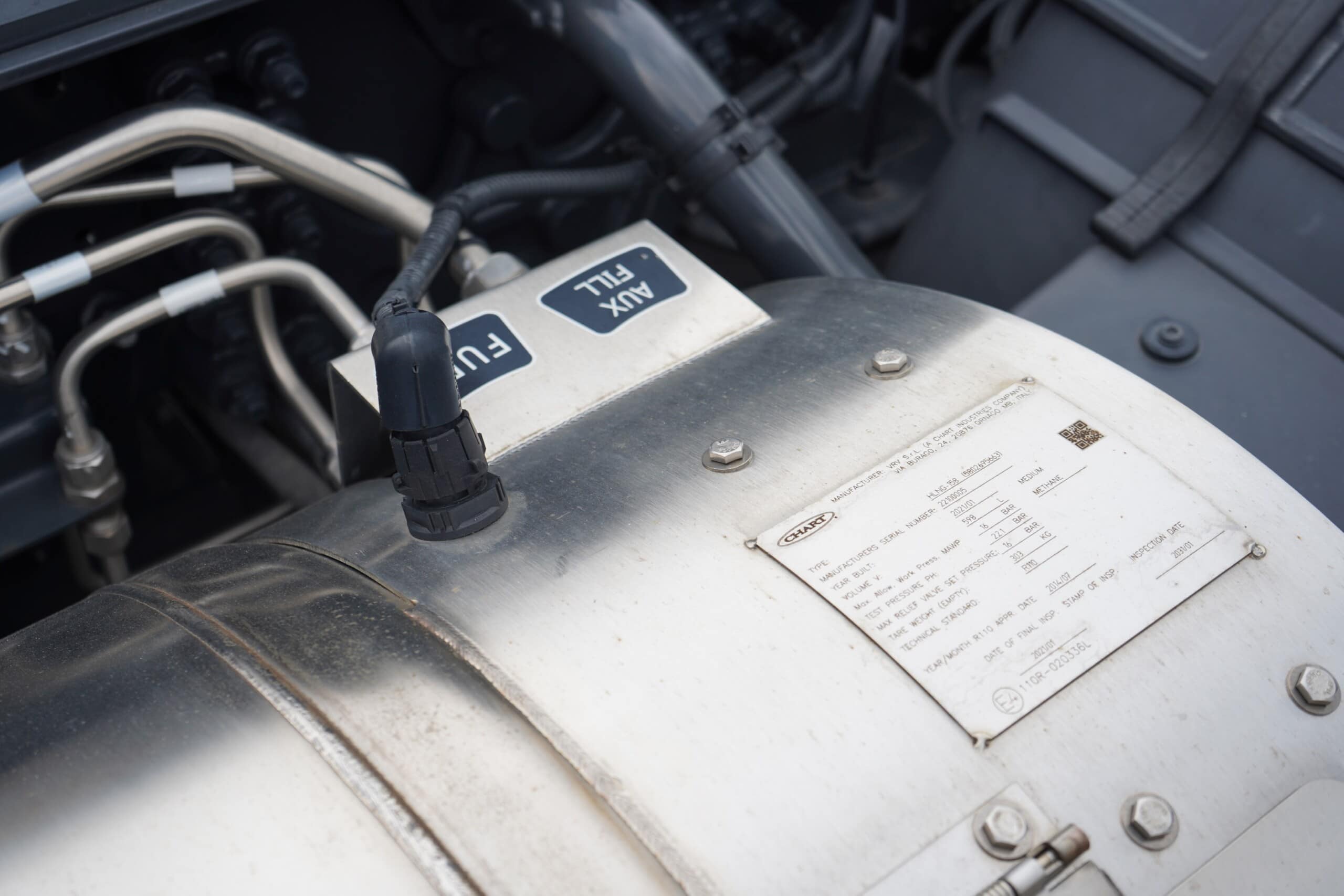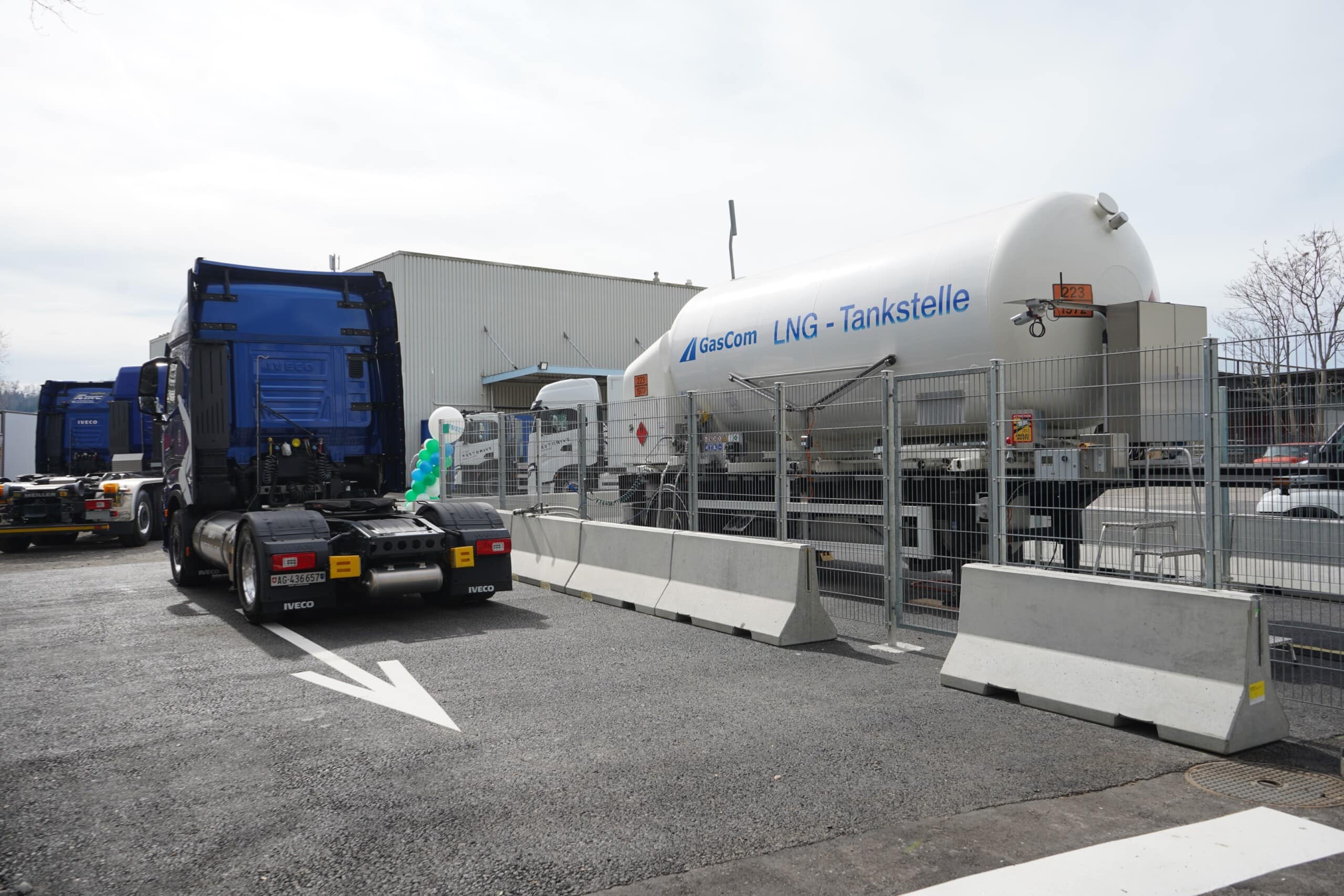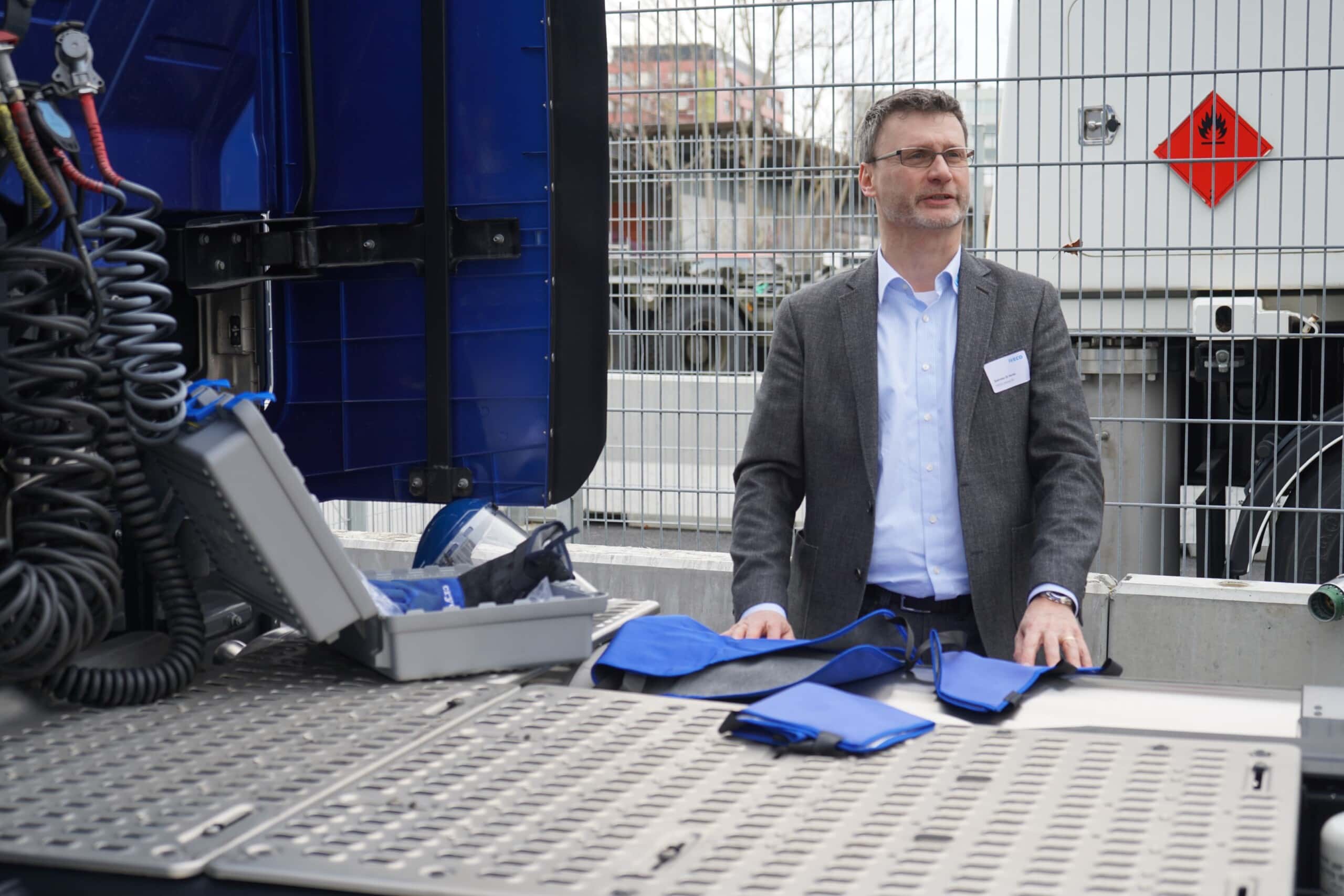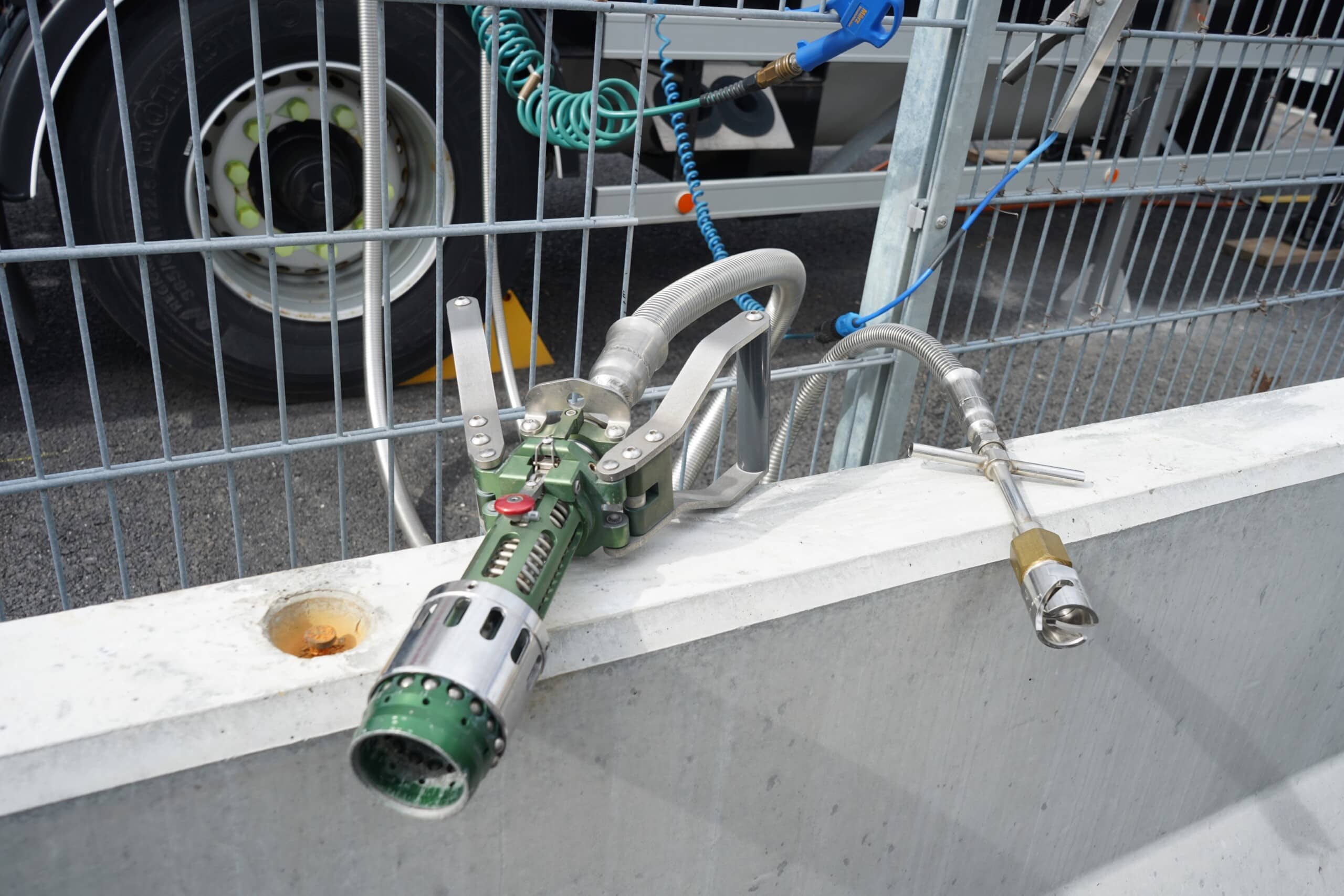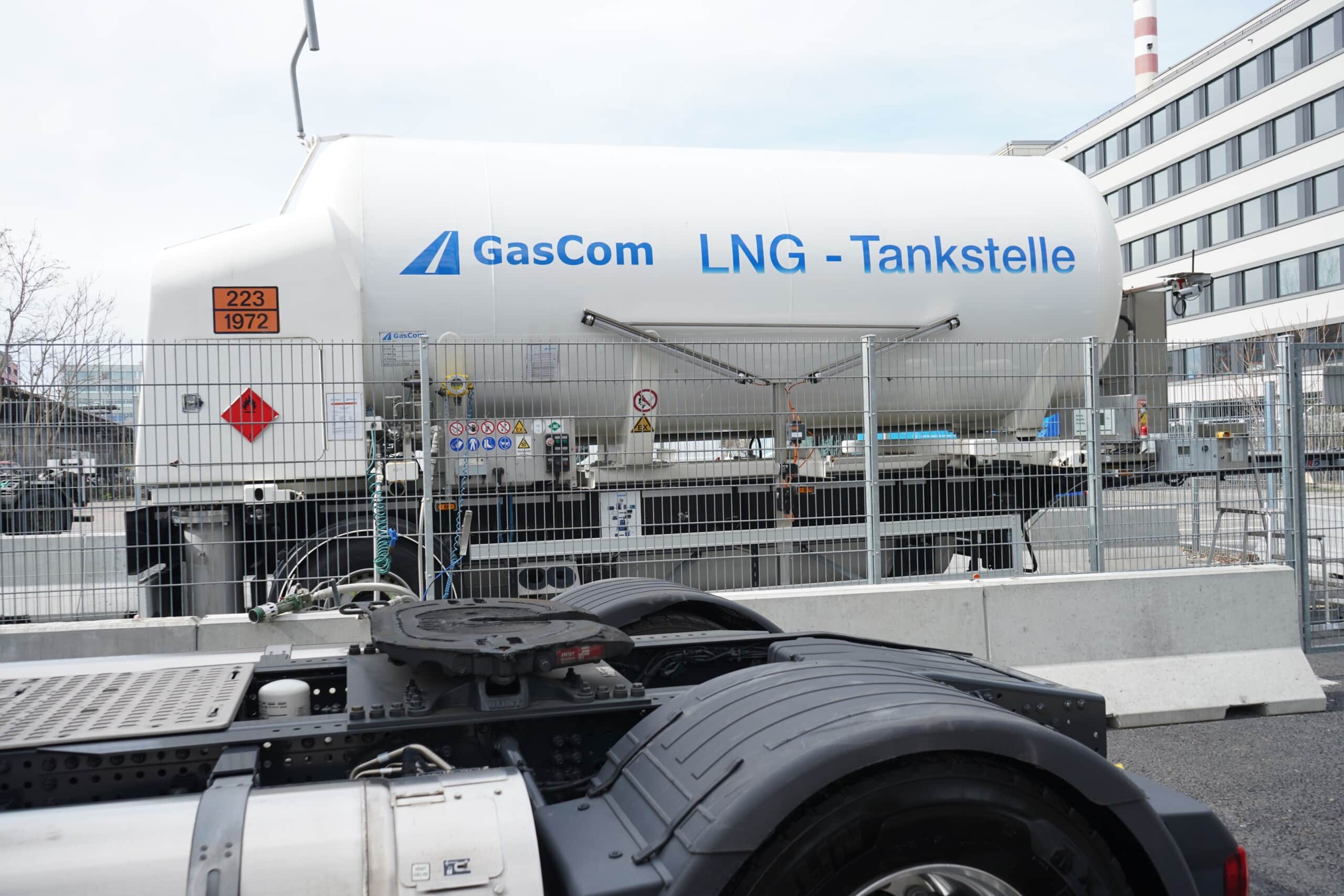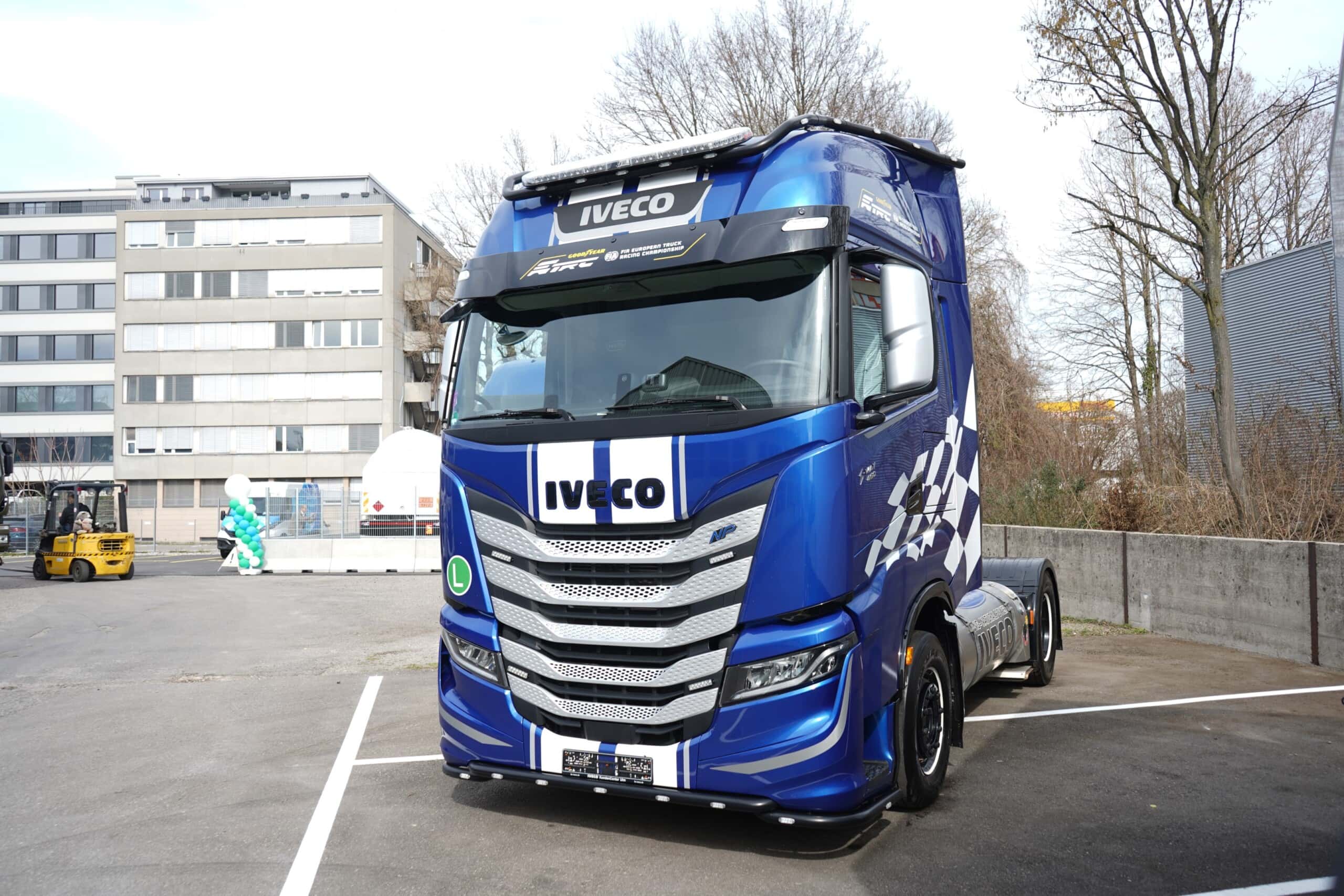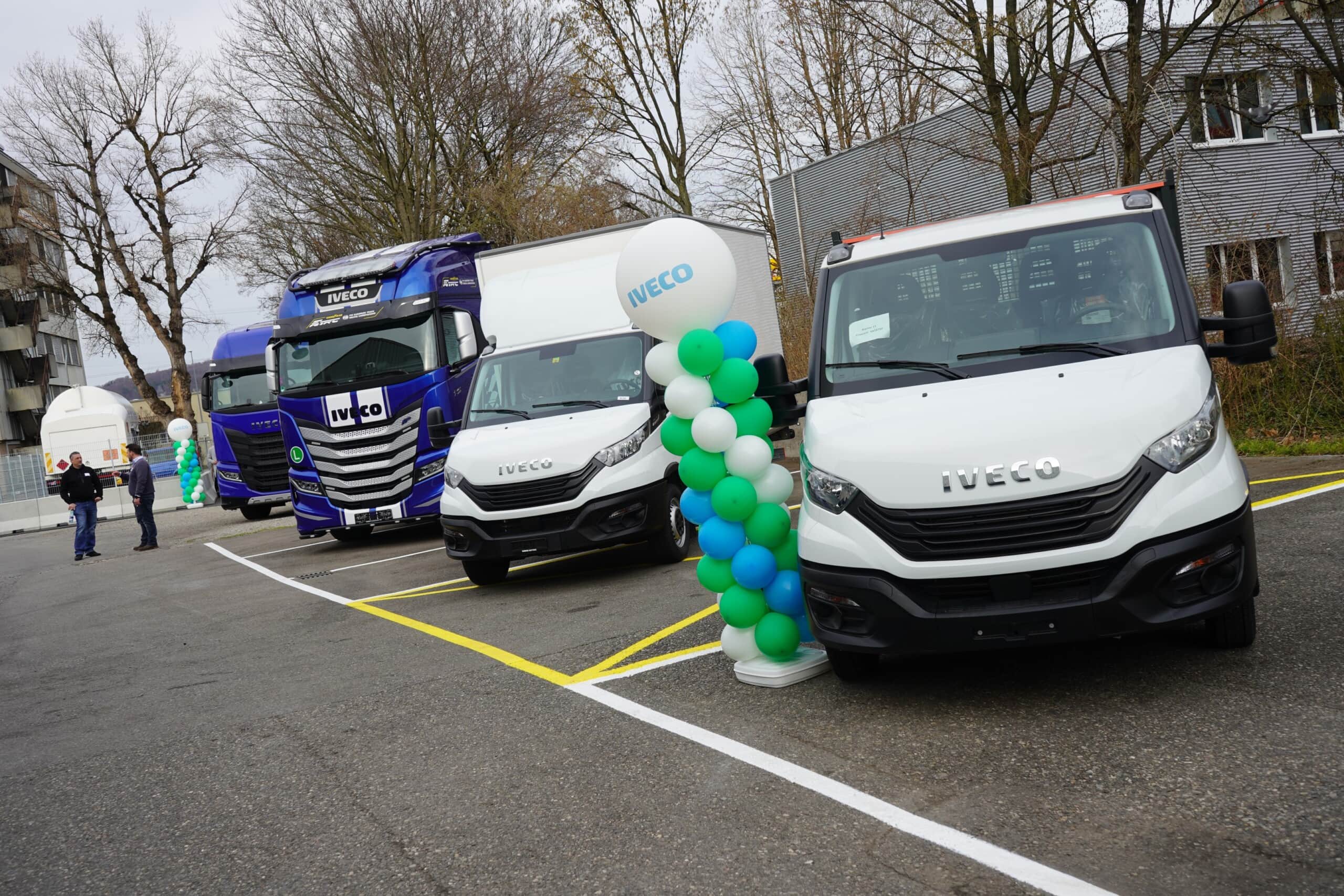Portal for more climate-friendly mobility
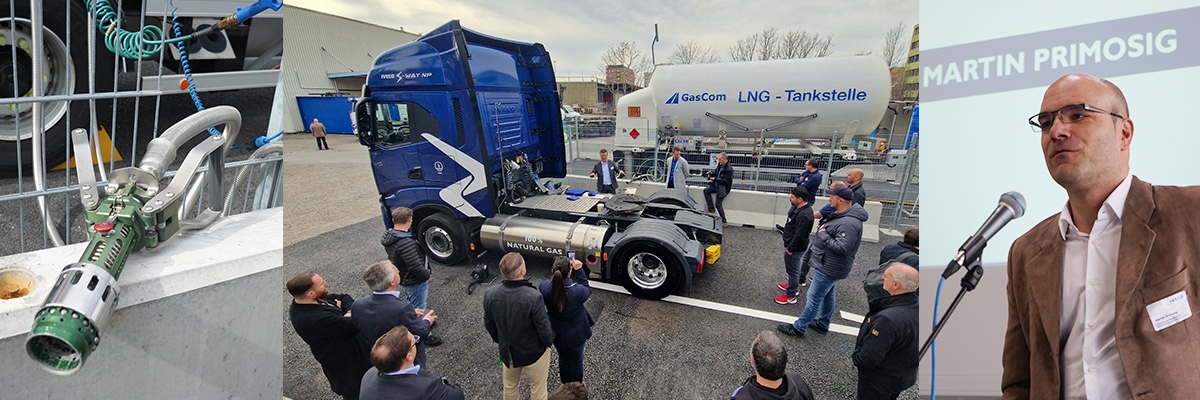
Building a bridge to the future
Switzerland’s first publicly accessible bio-LNG filling station adds to Europe’s steadily growing LNG network. The new refuelling facility at an Iveco branch makes it possible to make freight transport more sustainable. At the opening, Iveco managers explained why this is important.
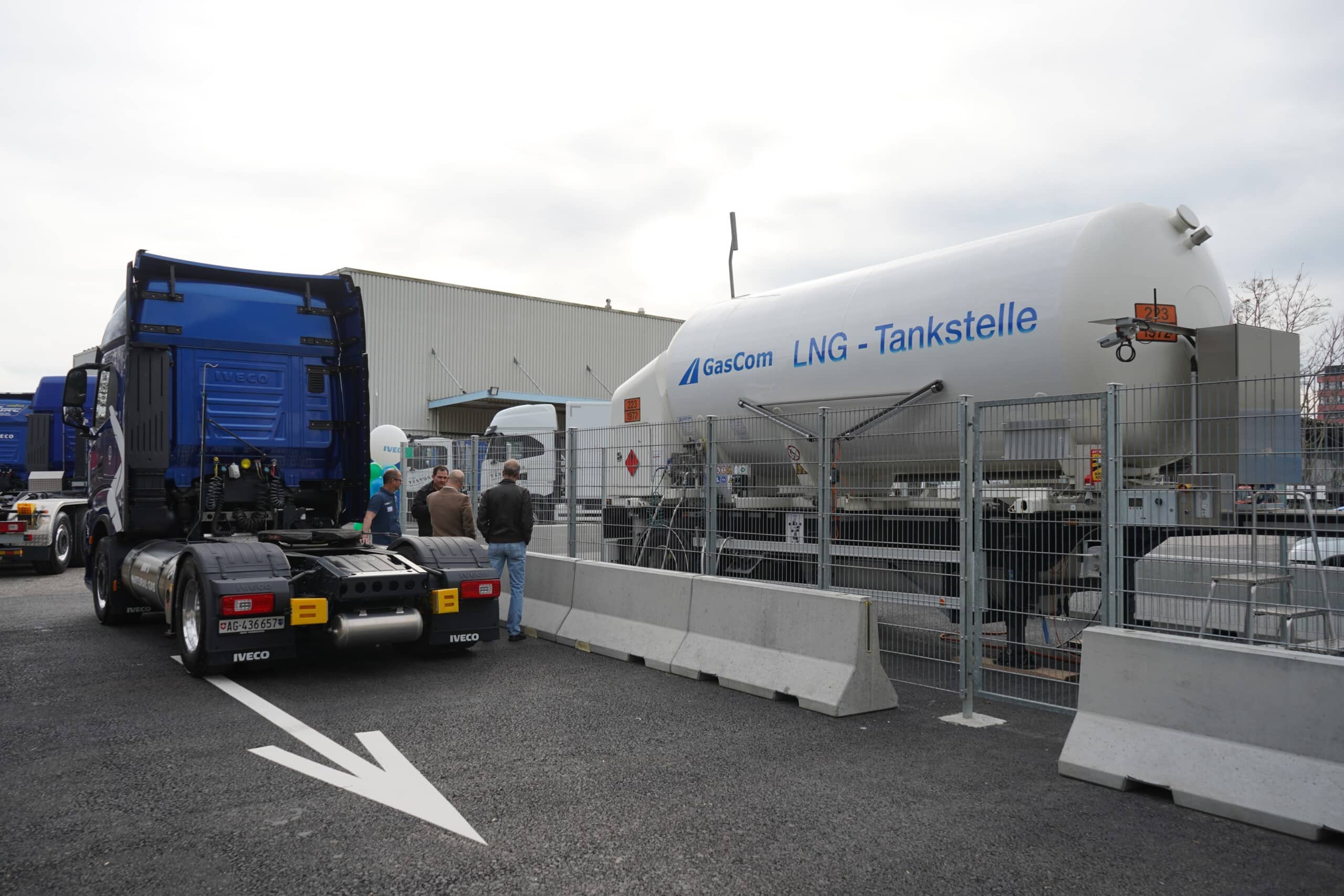 Switzerland’s first publicly accessible bio-LNG filling station is now located on the premises of the Iveco branch in Muttenz BL. Source: CNG-Mobility.ch
Switzerland’s first publicly accessible bio-LNG filling station is now located on the premises of the Iveco branch in Muttenz BL. Source: CNG-Mobility.ch
At present (as of August 2024), the LNG filling station in Muttenz BL is unfortunately not (or no longer) in operation.
Safety first: the first publicly accessible bio-LNG filling station in Switzerland is located at the rear of the Iveco branch, so it is fenced off, monitored by video and even protected by so-called New Jersey concrete elements. According to the association G-Mobility, there are already more than 650 LNG filling stations across Europe, and this number is growing steadily. For LNG vehicles, Switzerland has traditionally been a blank spot in the middle of the map of Europe. In addition to the newly opened facility in Muttenz BL, there were only three semi-public refuelling facilities – in Egerkingen SO, Weinfelden TG and Sévaz FR. The logistics service provider Krummen Kerzers AG set up and operates these in order to supply its LNG trucks which it runs on behalf of customers such as Lidl Switzerland.
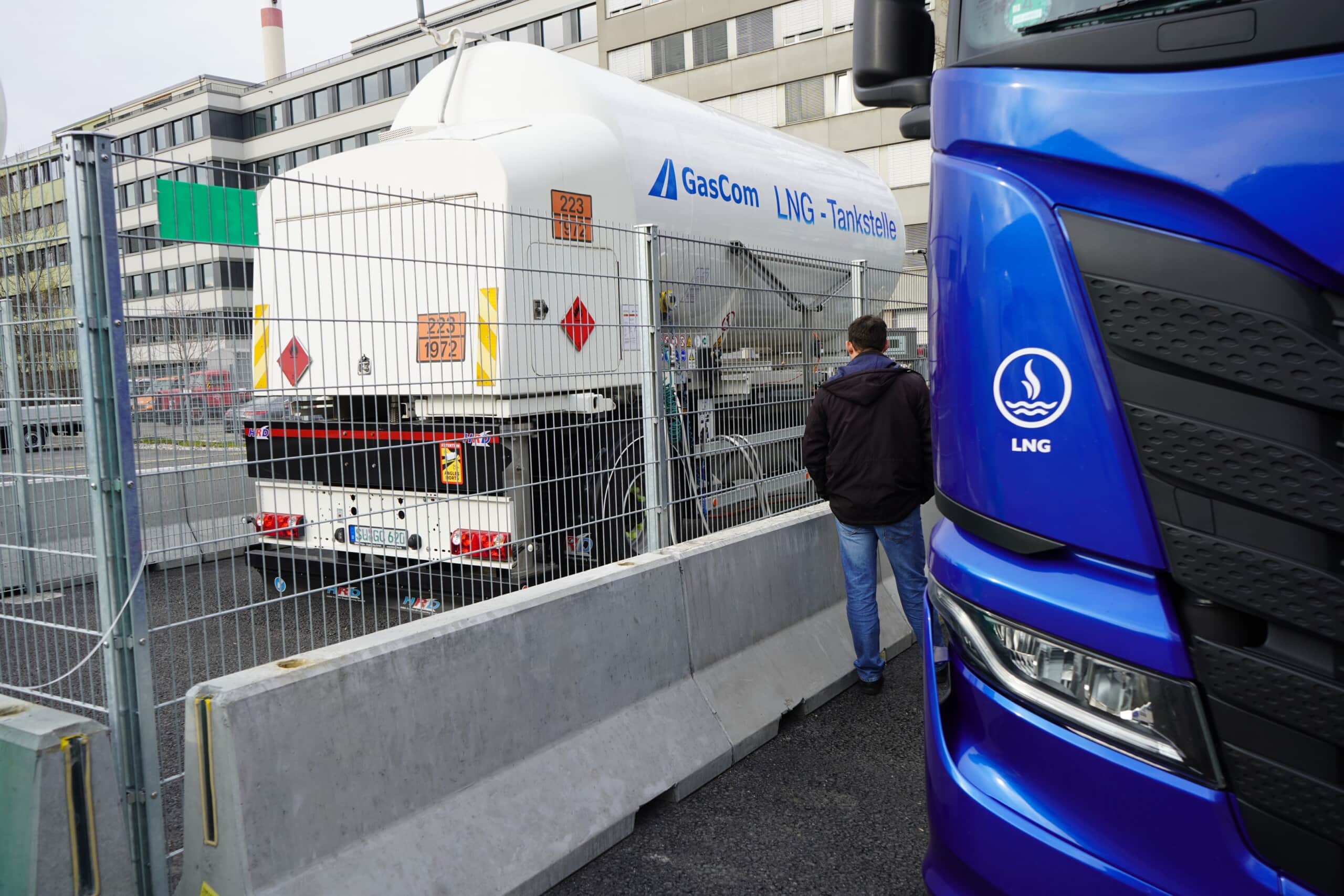 Thanks to the new LNG fuelling station, there is now a fuelling option for LNG-powered trucks not far from the motorway and in an extremely important corridor for freight transport – regardless of the brand. Source: CNG-Mobility.ch
Thanks to the new LNG fuelling station, there is now a fuelling option for LNG-powered trucks not far from the motorway and in an extremely important corridor for freight transport – regardless of the brand. Source: CNG-Mobility.ch
This is why Muttenz and Iveco are visibly proud to be able to support freight forwarders who have opted for LNG-powered vehicles – and therefore reduce CO2 emissions compared to diesel trucks – by providing a filling station in an enormously important Swiss freight corridor, thereby promoting sustainability in heavy transport. “We want to build a bridge to the future and ensure that the next generation can still enjoy a healthy environment,” explains Vincenzo Rotolo, Operations Manager of the Iveco subsidiary in Muttenz. So the first public bio-LNG filling station is set to lay the foundations for others in Switzerland.
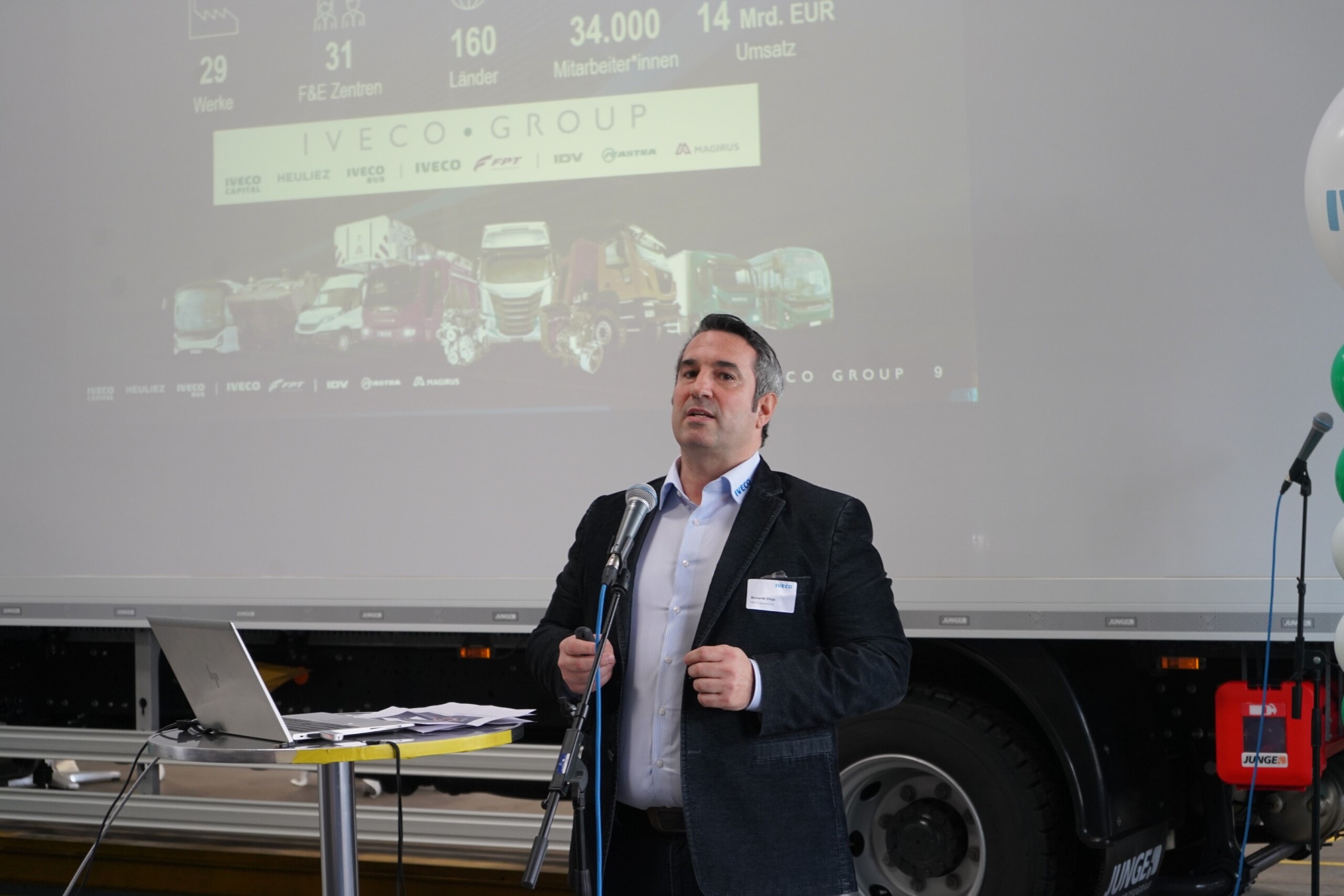 Riccardo Virga, Managing Director of Iveco Switzerland, explained the strategy of his brand at the opening and why the Italian manufacturer also relies on vehicles with CNG and truck drive for more sustainability. Source: CNG-Mobility.ch
Riccardo Virga, Managing Director of Iveco Switzerland, explained the strategy of his brand at the opening and why the Italian manufacturer also relies on vehicles with CNG and truck drive for more sustainability. Source: CNG-Mobility.ch
“Our goal at Iveco is zero emissions,” explains Riccardo Virga, Managing Director of Iveco Switzerland. “But there’s more than just one solution for us in terms of achieving this goal. We’re consciously pursuing a technology-neutral approach to the future, focusing primarily on solutions that are already available here and now. That’s why gas also has a key role to play for Iveco in terms of sustainable freight transport.” For example, trucks powered by CNG emit up to 35% less CO2 than comparable diesel trucks – and up to 85% less if they run on Swiss biogas. And even using fossil LNG it is possible to save large amounts of greenhouse gas emissions. CNG, which is liquefied by cooling, burns much cleaner and produces 15% less CO2, 35% less nitrogen oxides and even 95% less particulate matter than diesel. If gas from sustainable sources is used here, too – i.e. bio-LNG or liquefied biogas, also known as LBG – this ensures virtually CO2-neutral transportation.
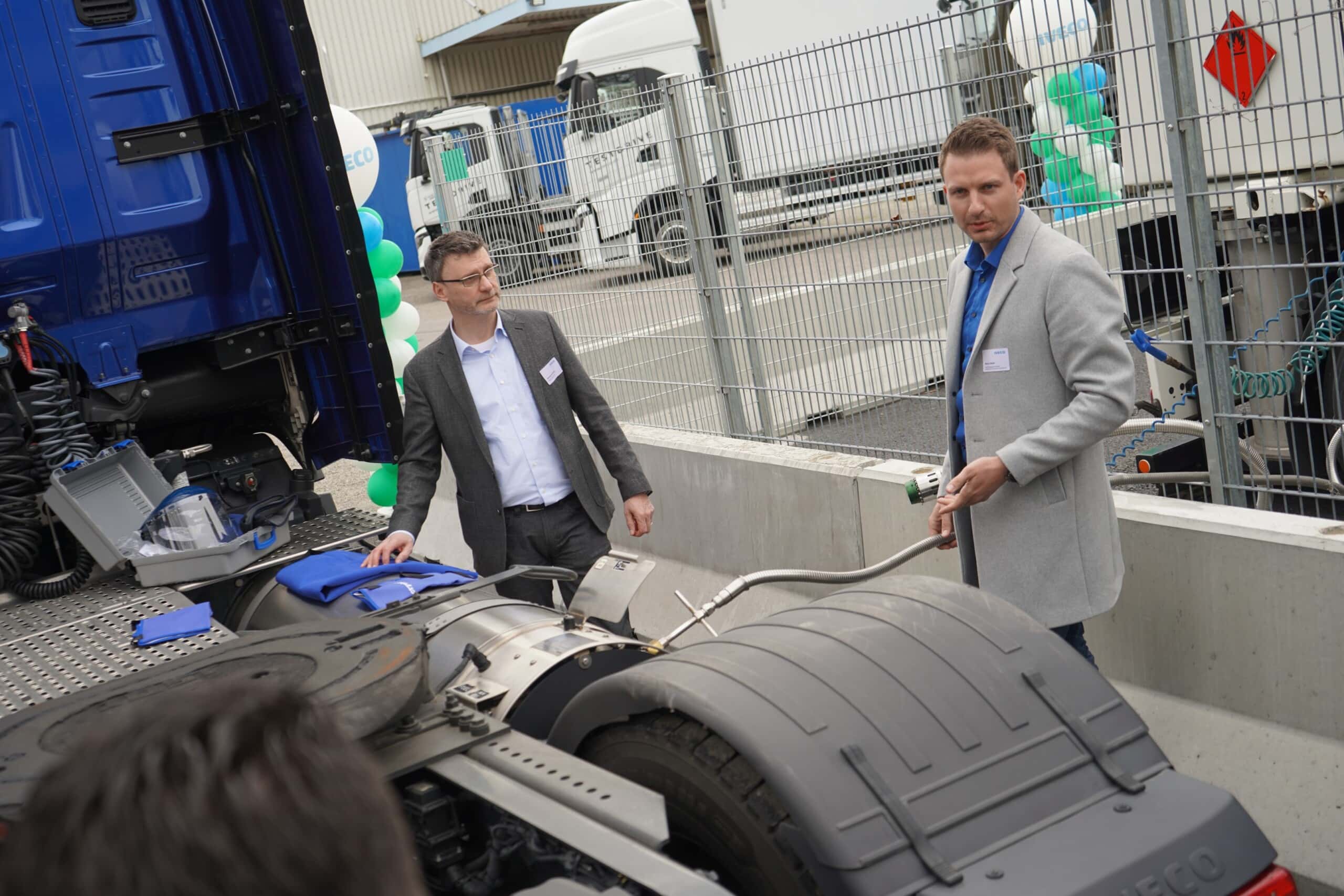 Salvino Di Verde, Product Manager at Iveco Switzerland (left) and Stefan Rauser, Business Development Manager and Project Manager LNG Filling Station Iveco, explain details of the refuelling process. Source: CNG-Mobility.ch
Salvino Di Verde, Product Manager at Iveco Switzerland (left) and Stefan Rauser, Business Development Manager and Project Manager LNG Filling Station Iveco, explain details of the refuelling process. Source: CNG-Mobility.ch
Stefan Rauser, Business Development Manager and Project Manager for the bio-LNG filling station at Iveco Switzerland, underlines this: “As a Group, we are committed to further developing LNG and CNG technology. Our engine research department at FPT in Arbon, Thurgau, also has a key role to play here. We offer our customers a good, reliable product with a wide range of applications at a good price.” In addition, he says, Iveco customers can rely on good service and attractive total costs of the product over its entire life cycle (TCO costs) for gas vehicles, whether with CNG or LNG drive. “Customers expect us at Iveco to guarantee secure deployment. In order to have the same success with LNG vehicles as in Germany and the rest of Europe, Switzerland needs additional LNG refuelling options,” says Rauser.
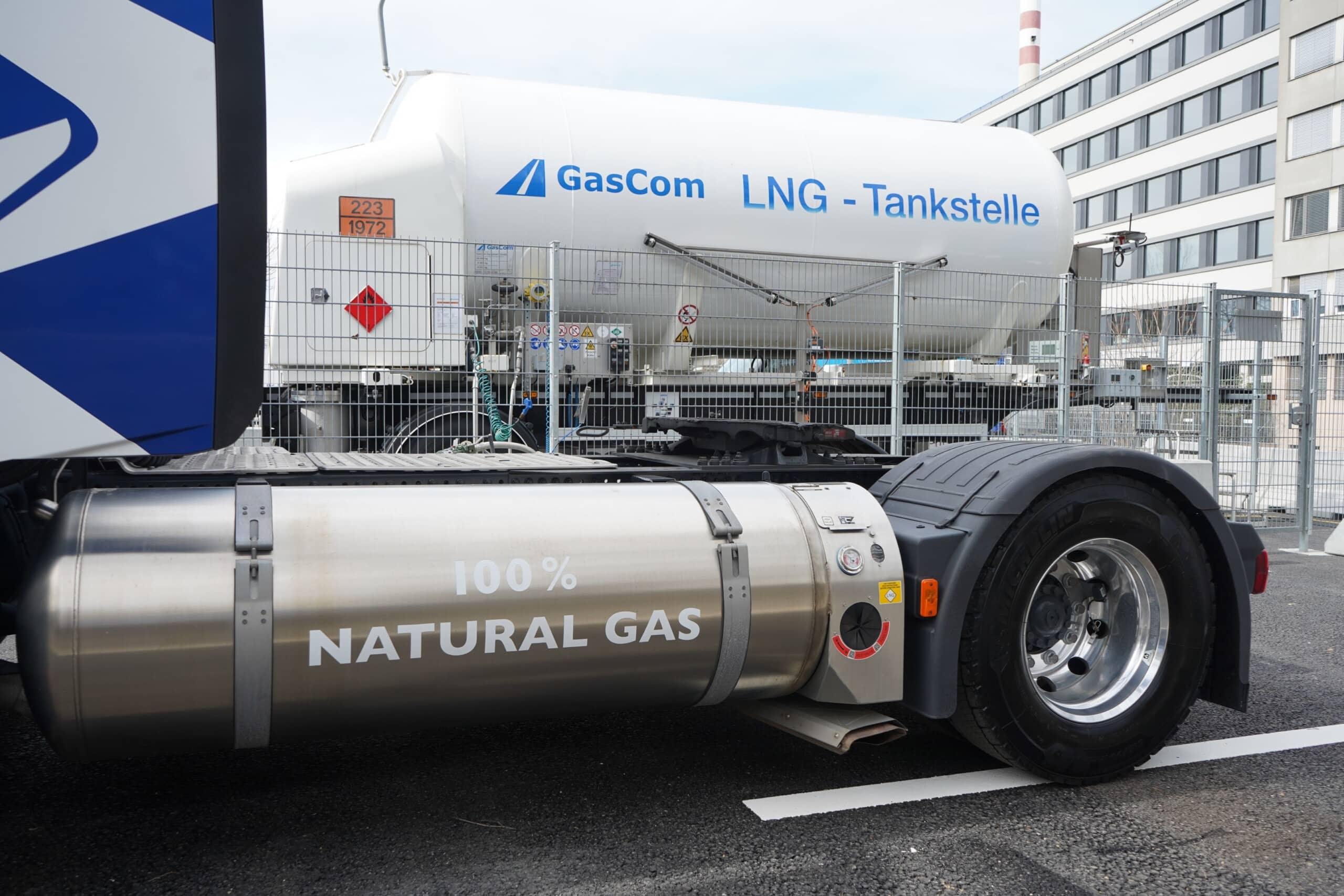 Even with fossil LNG, trucks can save large amounts of greenhouse gas emissions compared to diesel trucks. If you use liquefied biogas, you are even almost CO2-neutral on the road. Source: CNG-Mobility.ch
Even with fossil LNG, trucks can save large amounts of greenhouse gas emissions compared to diesel trucks. If you use liquefied biogas, you are even almost CO2-neutral on the road. Source: CNG-Mobility.ch
In order to improve the network of filling stations in Germany, the company brought on board an important partner in the case of Muttenz in the form of Gasverbund Mittelland. This meant that the first publicly accessible bio-LNG filling station was built in the immediate vicinity of the motorway and on the site of the Iveco branch in Muttenz BL, which is easily accessible even for lorries with trailers. Customers can currently pay with a GasCom card. Other payment methods are currently being looked at in connection with further deliberations and installations. An autonomous bio-LNG tank system was installed with a 16-cubic-metre or 7-tonne trailer, which is sufficient for refuelling some 30 trucks. “We’ve been able to gain a lot of experience with our autonomous LNG plant in Bubendorf in recent years. That’s why the authorities were already familiar with LNG,” says Martin Primosig from Gasverbund Mittelland AG.
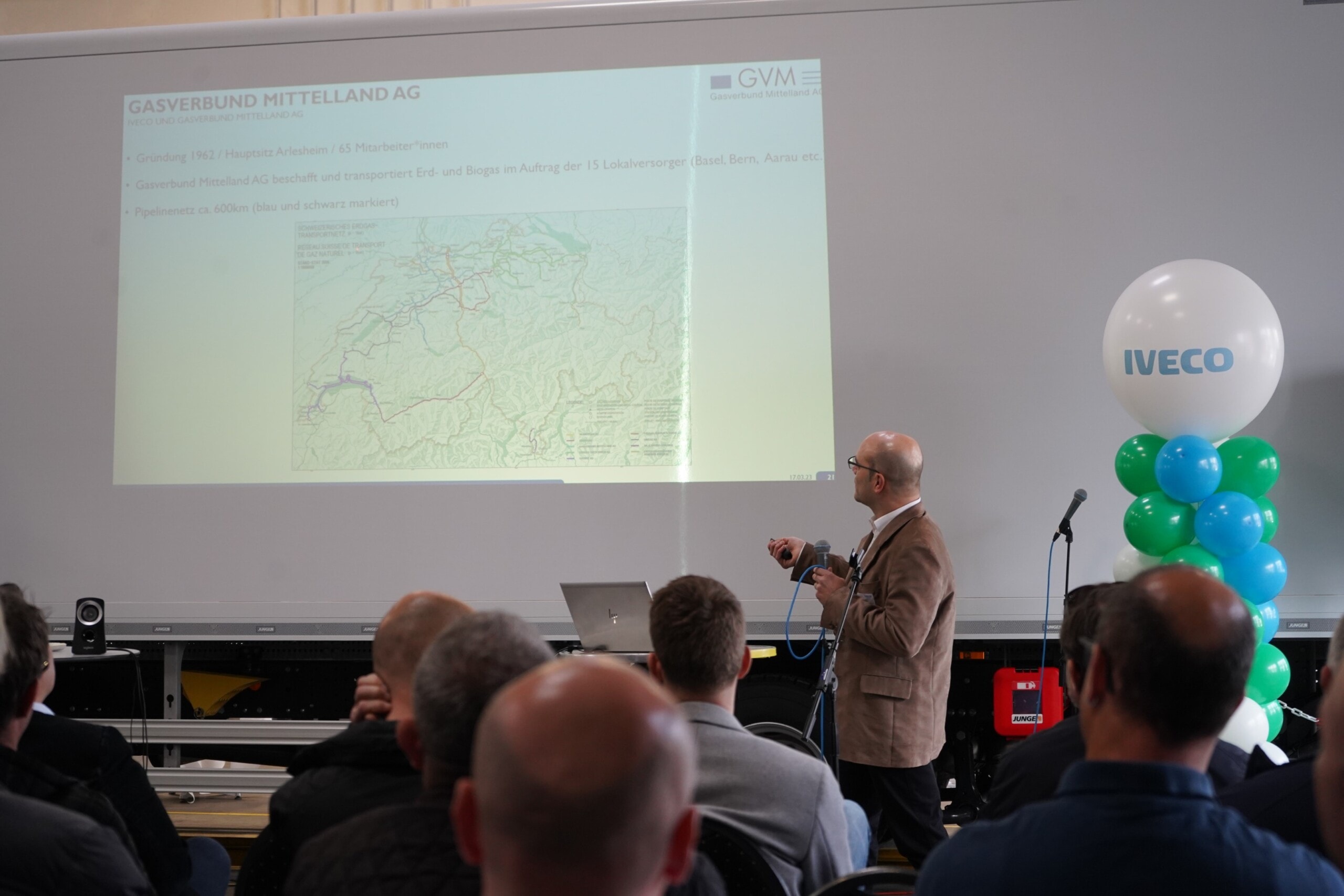 Even with fossil LNG, trucks can save large amounts of greenhouse gas emissions compared to diesel trucks. If you use liquefied biogas, you are even almost CO2-neutral on the road. Source: CNG-Mobility.ch
Even with fossil LNG, trucks can save large amounts of greenhouse gas emissions compared to diesel trucks. If you use liquefied biogas, you are even almost CO2-neutral on the road. Source: CNG-Mobility.ch
Combined with good cooperation with the authorities, this certainly helped in the realisation of the first bio-LNG filling station. “It would also be possible to expand the plant to 37 cubic metres, which would then be enough to refuel 80 trucks with LNG engines,” explains the GVM project manager. But this is a dream of the future. For the time being, the aim is for a sufficient number of LNG-powered lorries to be able to use the filling station, providing the opportunity to refuel with sustainable gas for sustainable mobility even in heavy-duty vehicles, thereby reducing CO2 emissions in freight transport and gradually moving closer to the goal of net zero. (jas, 30 March 2023)
You might also be interested in
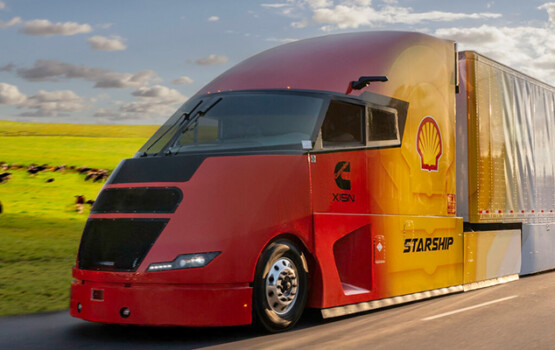
Shell Starship on record hunt
